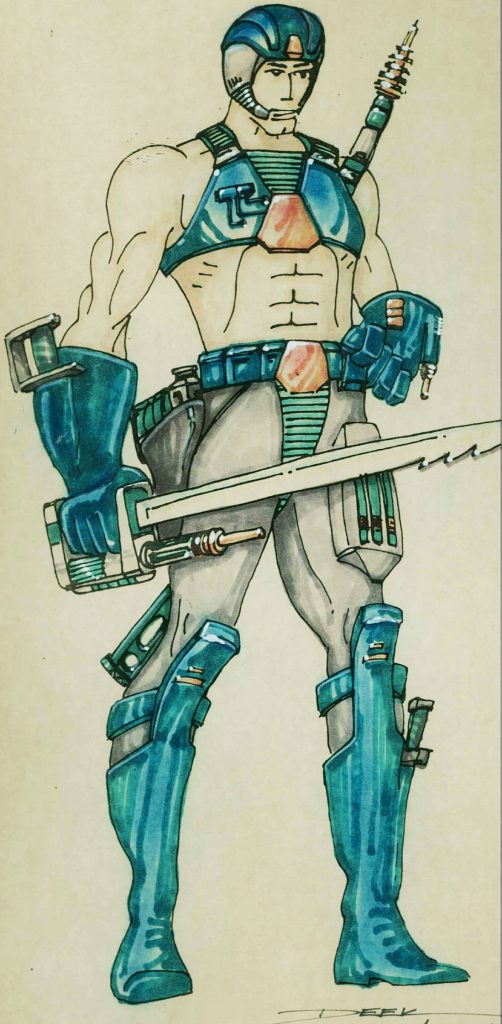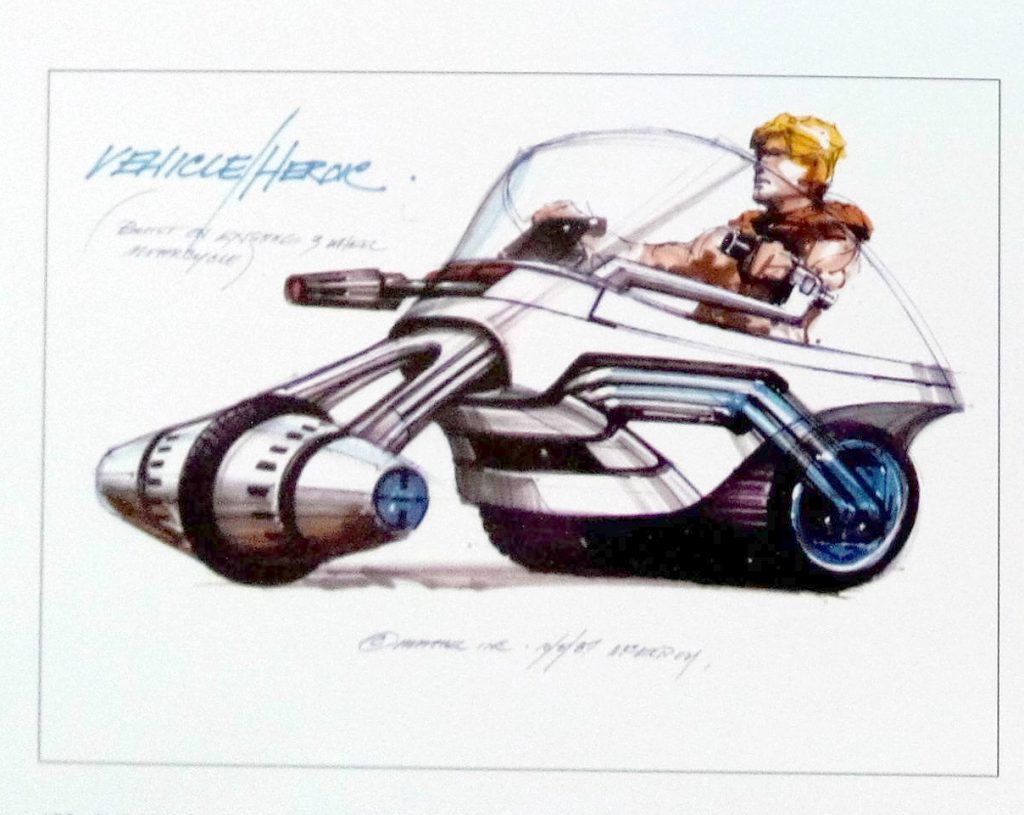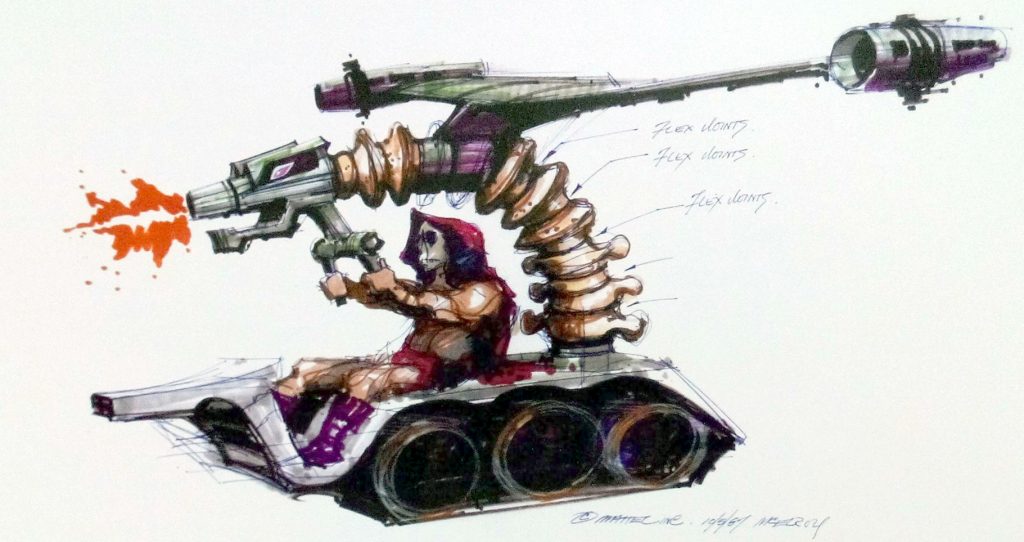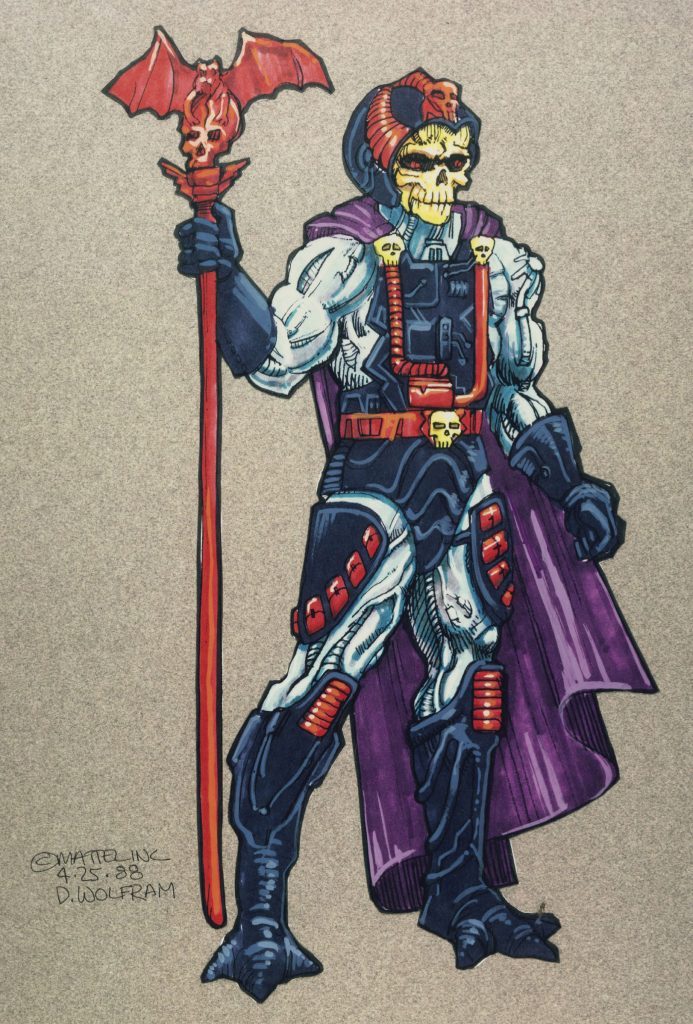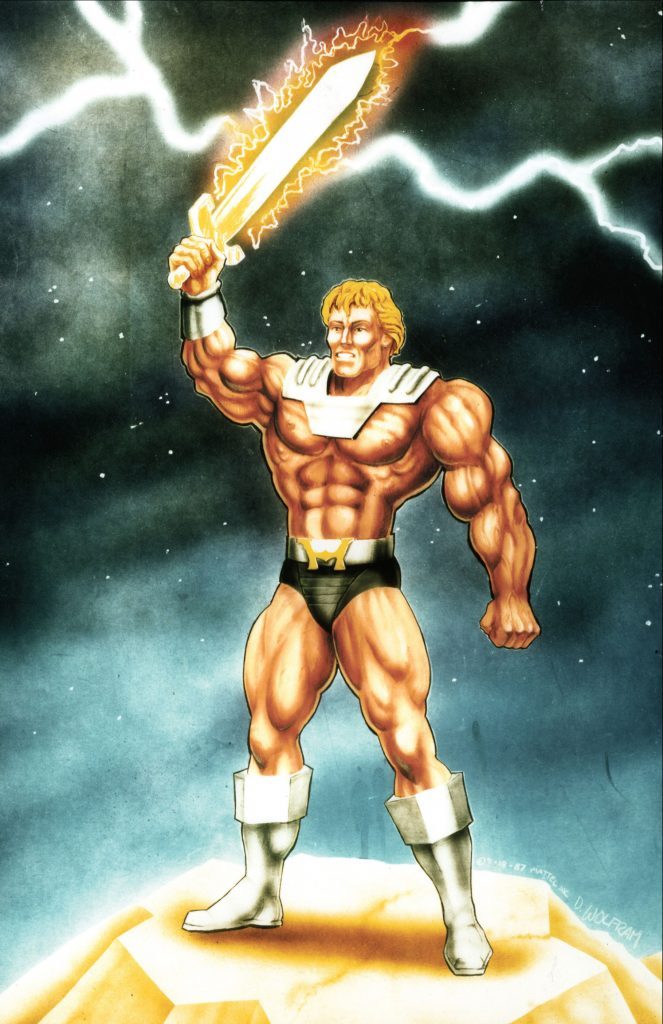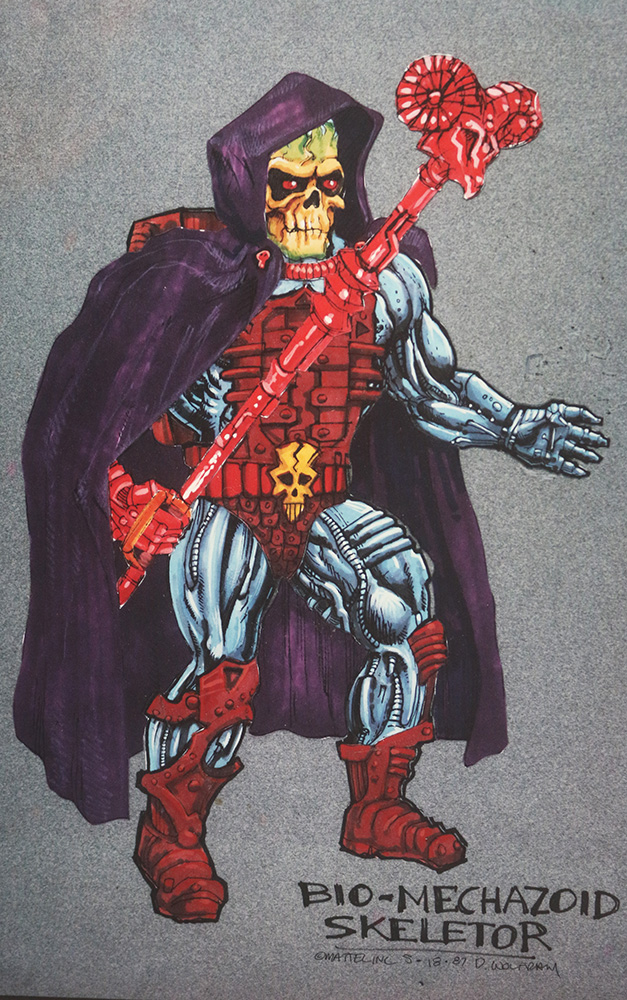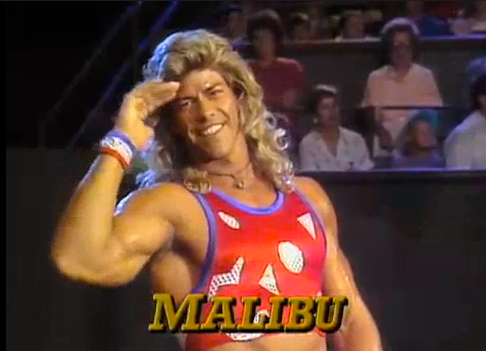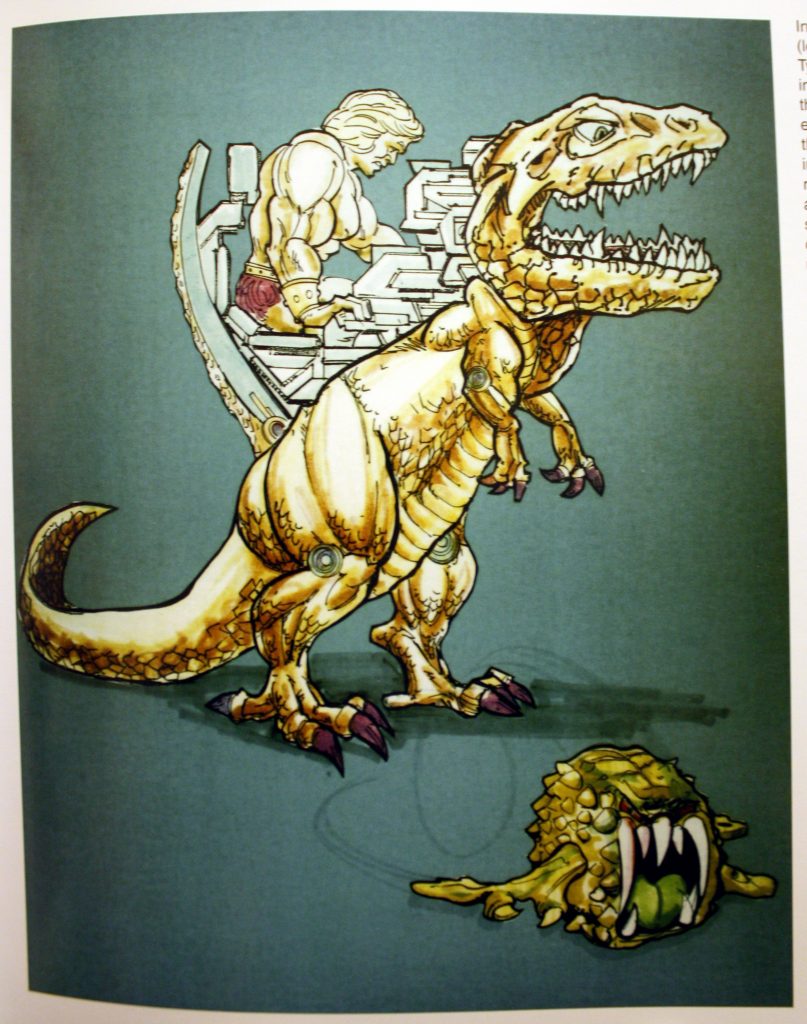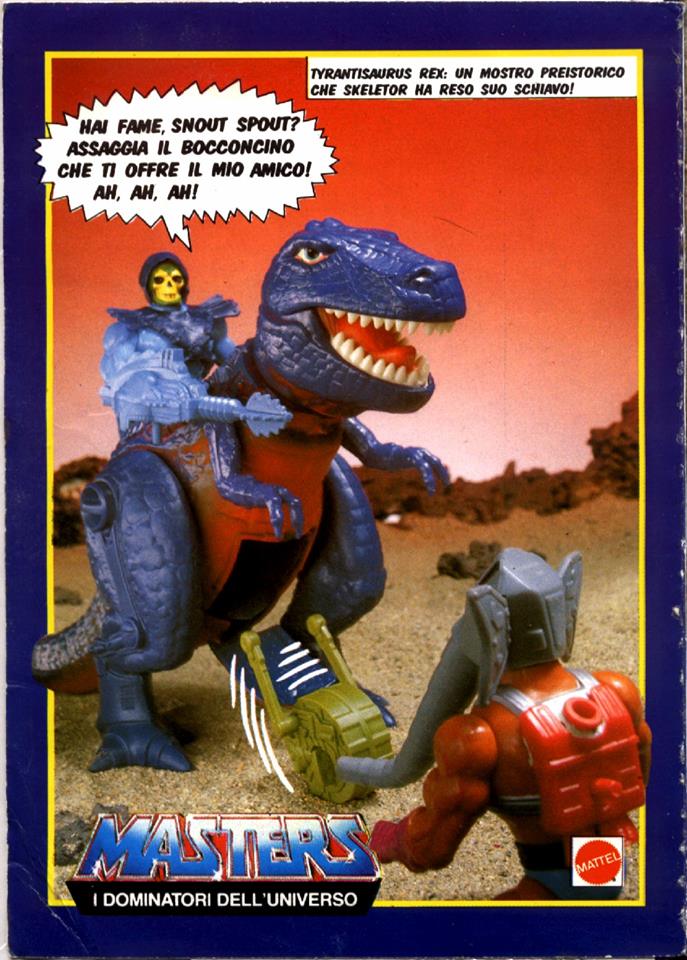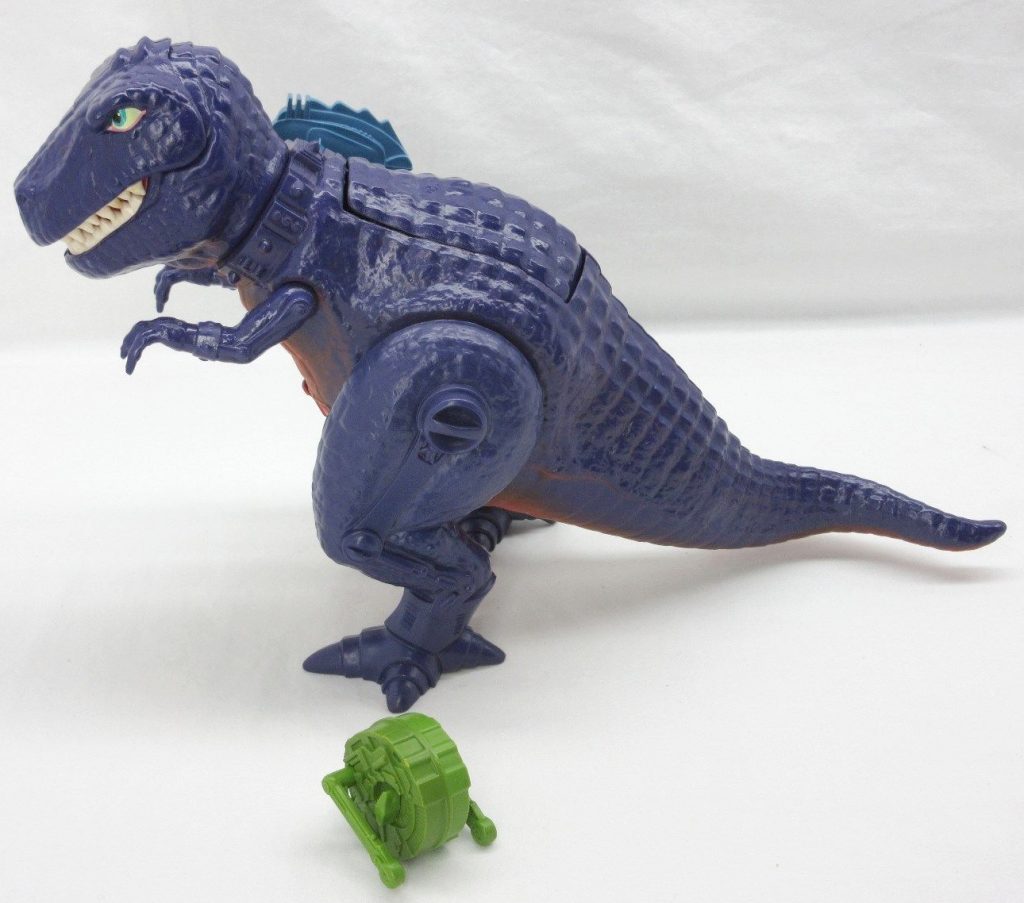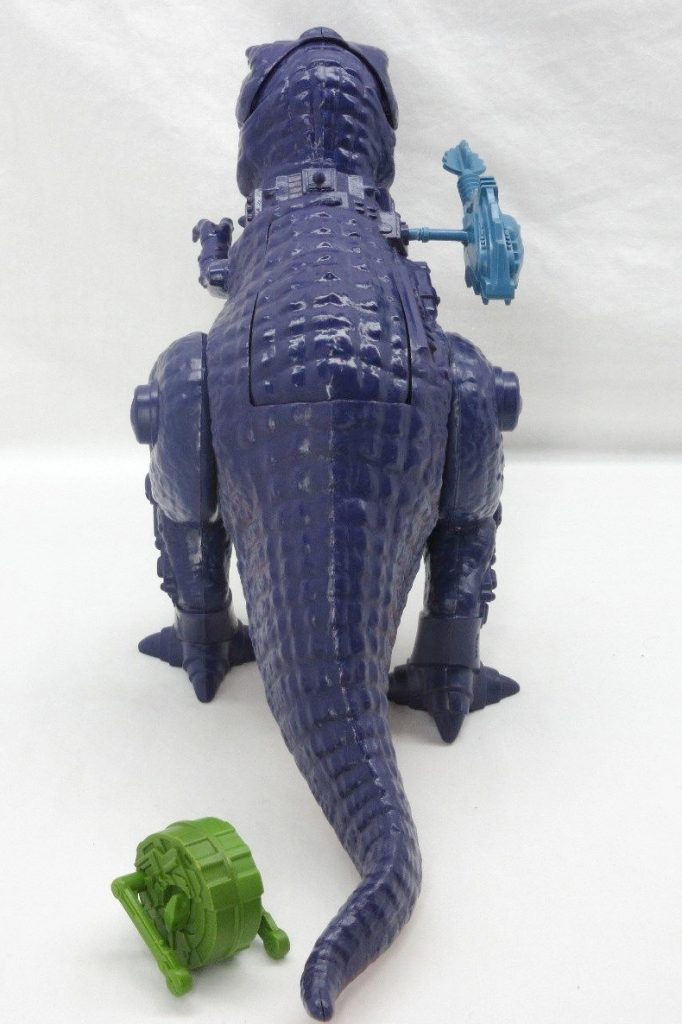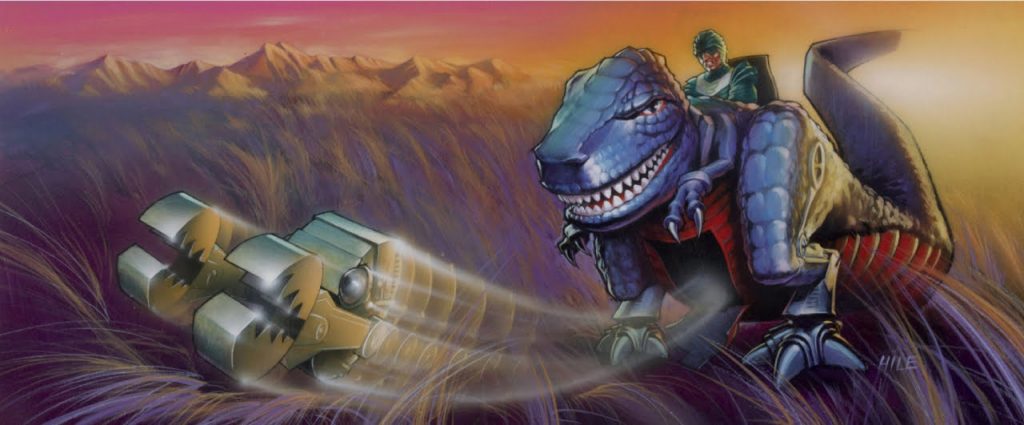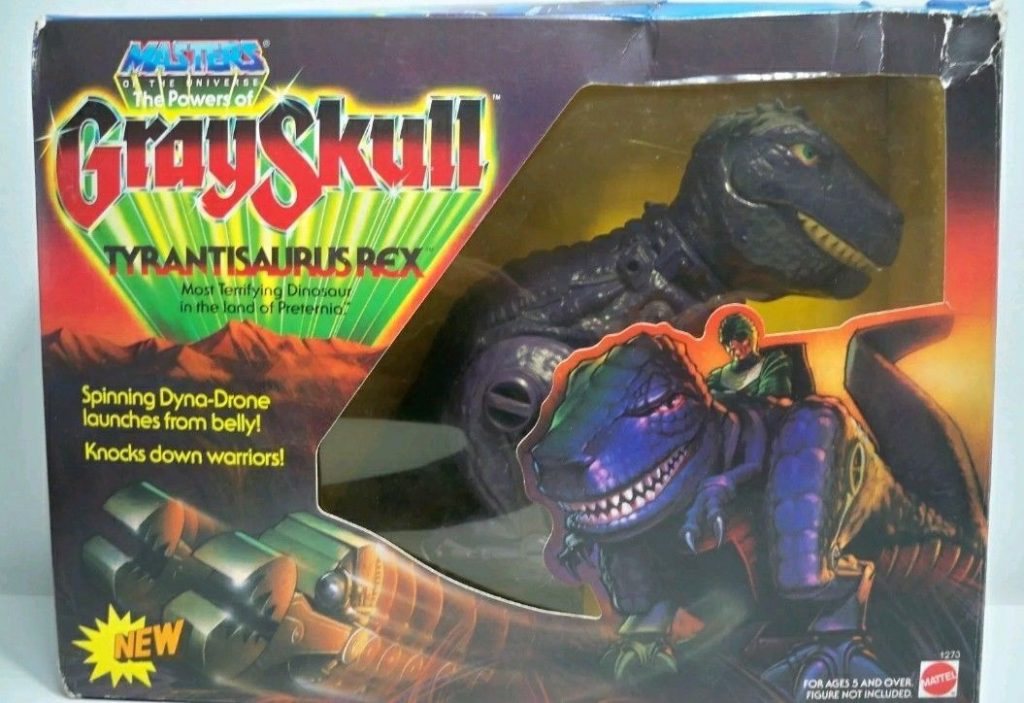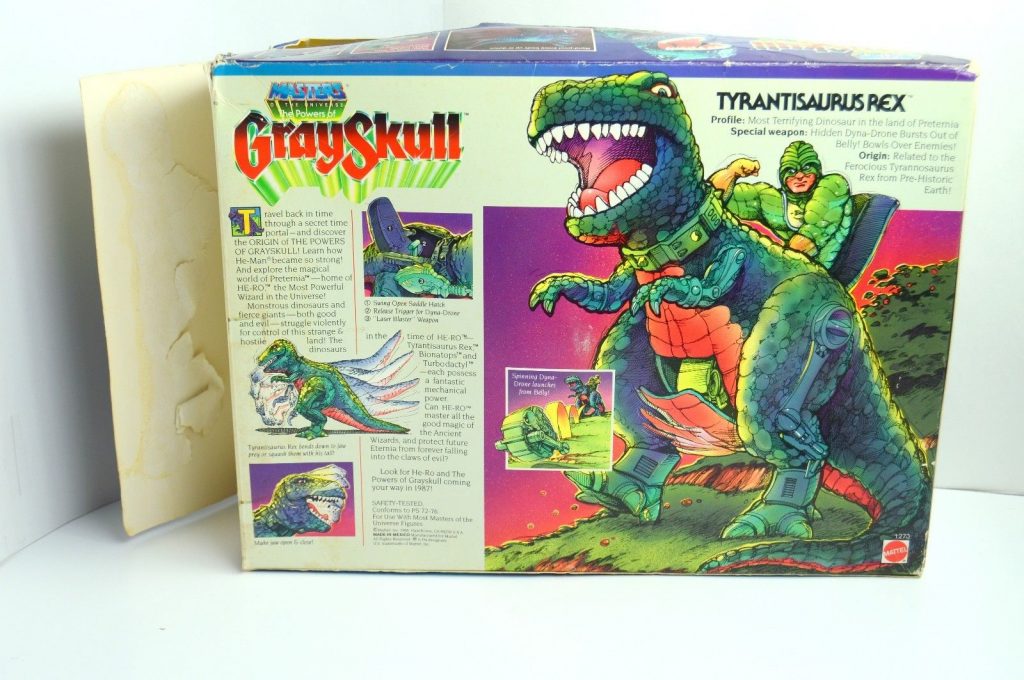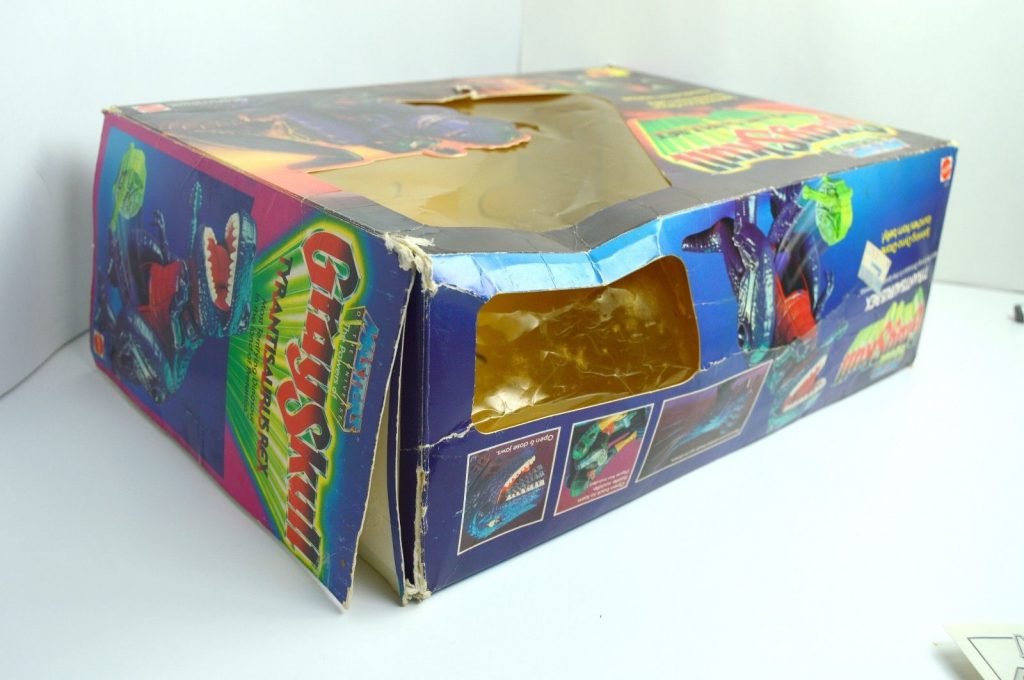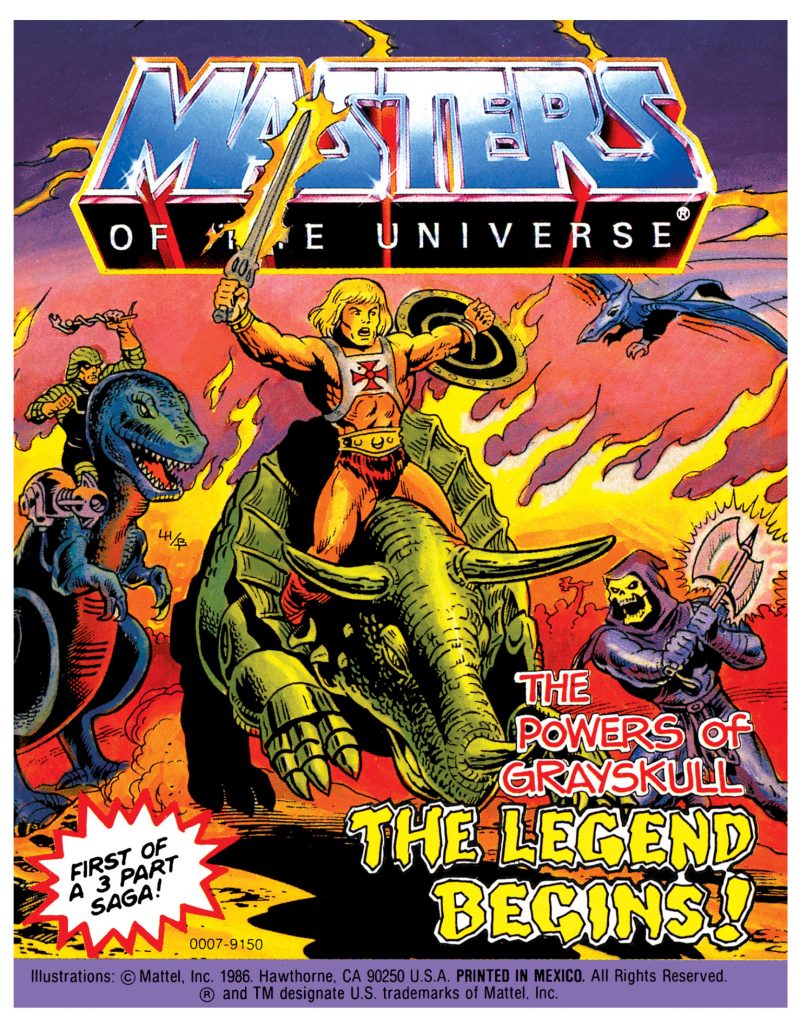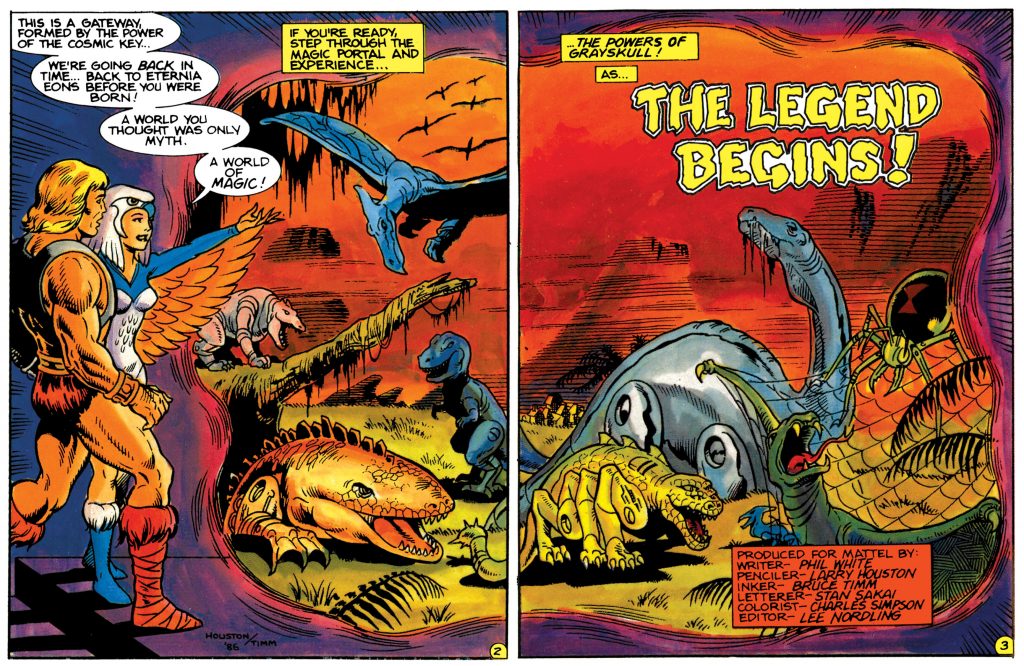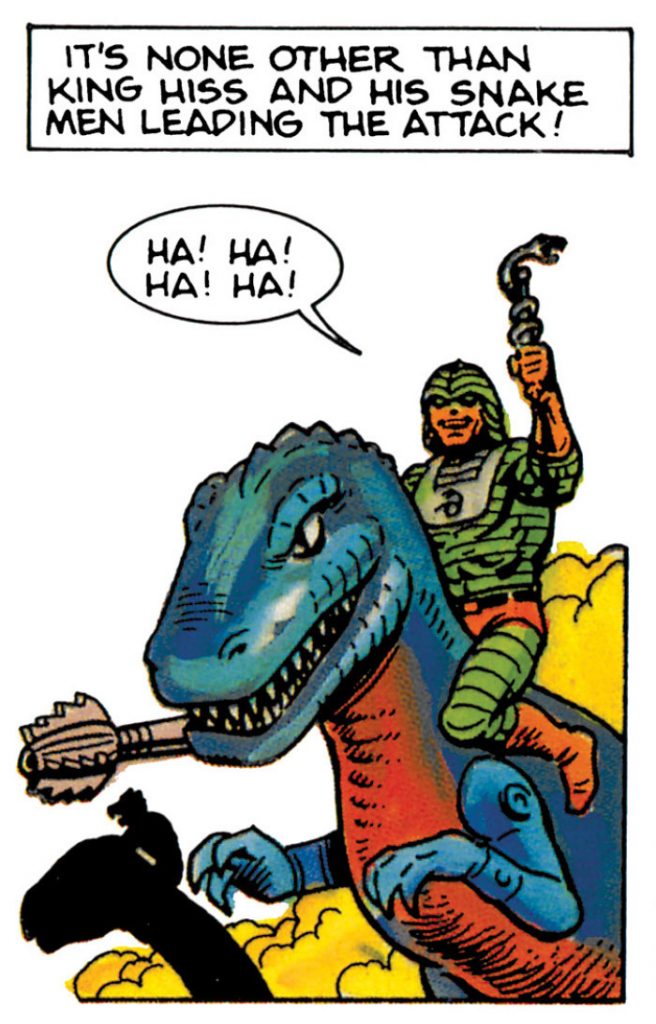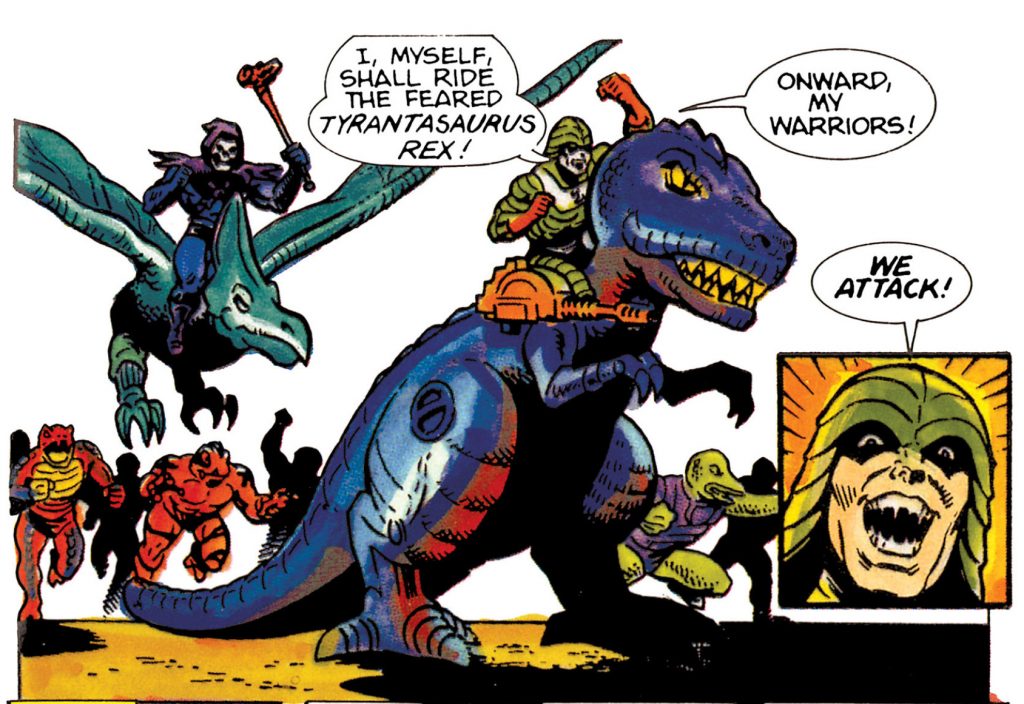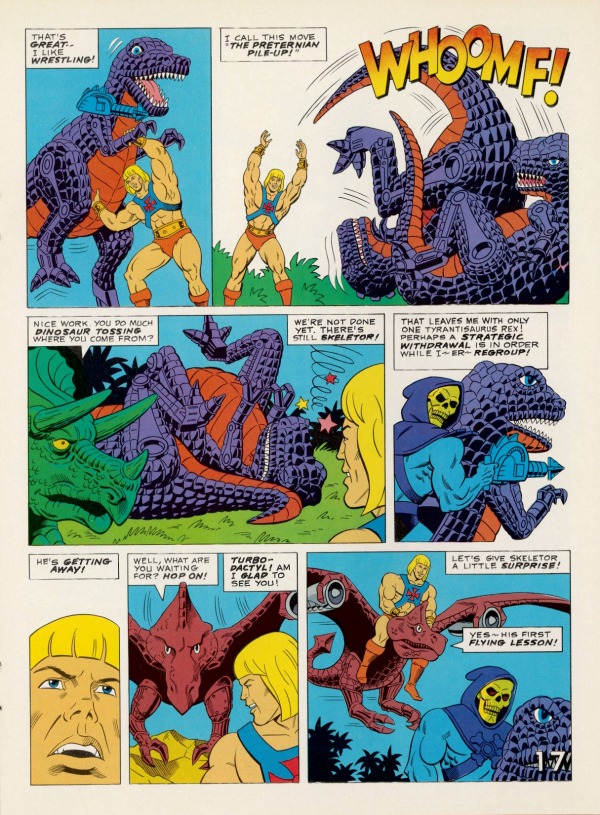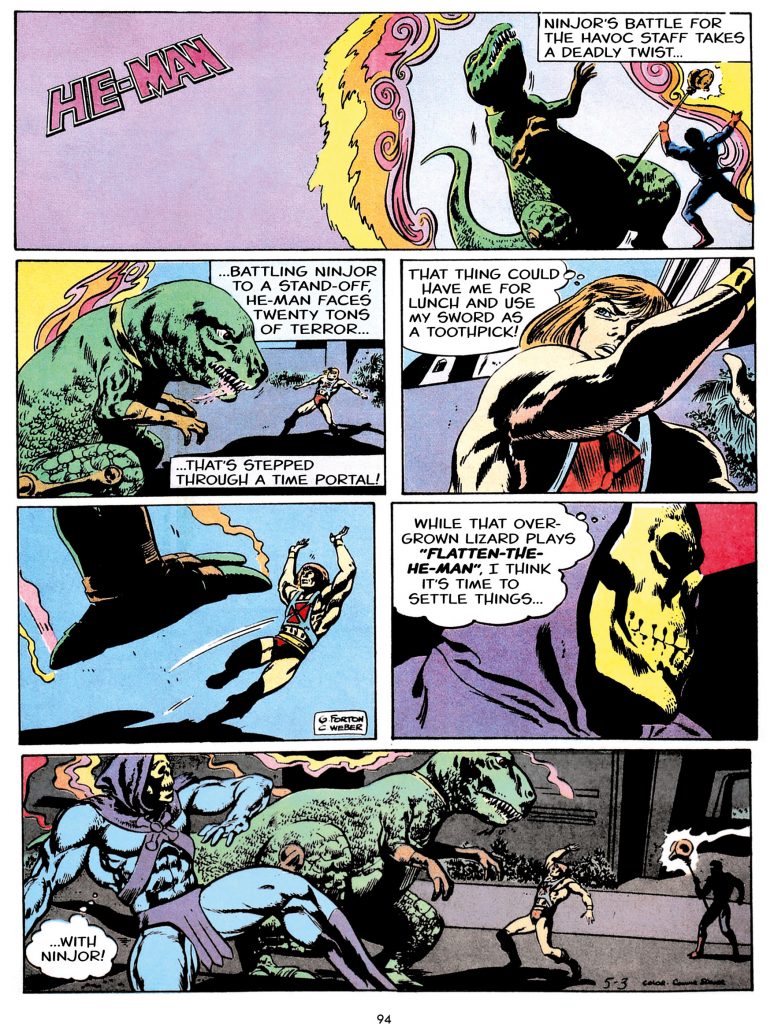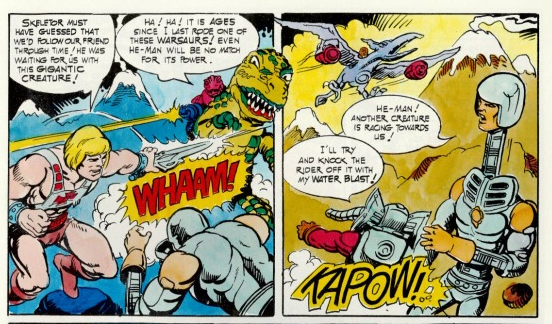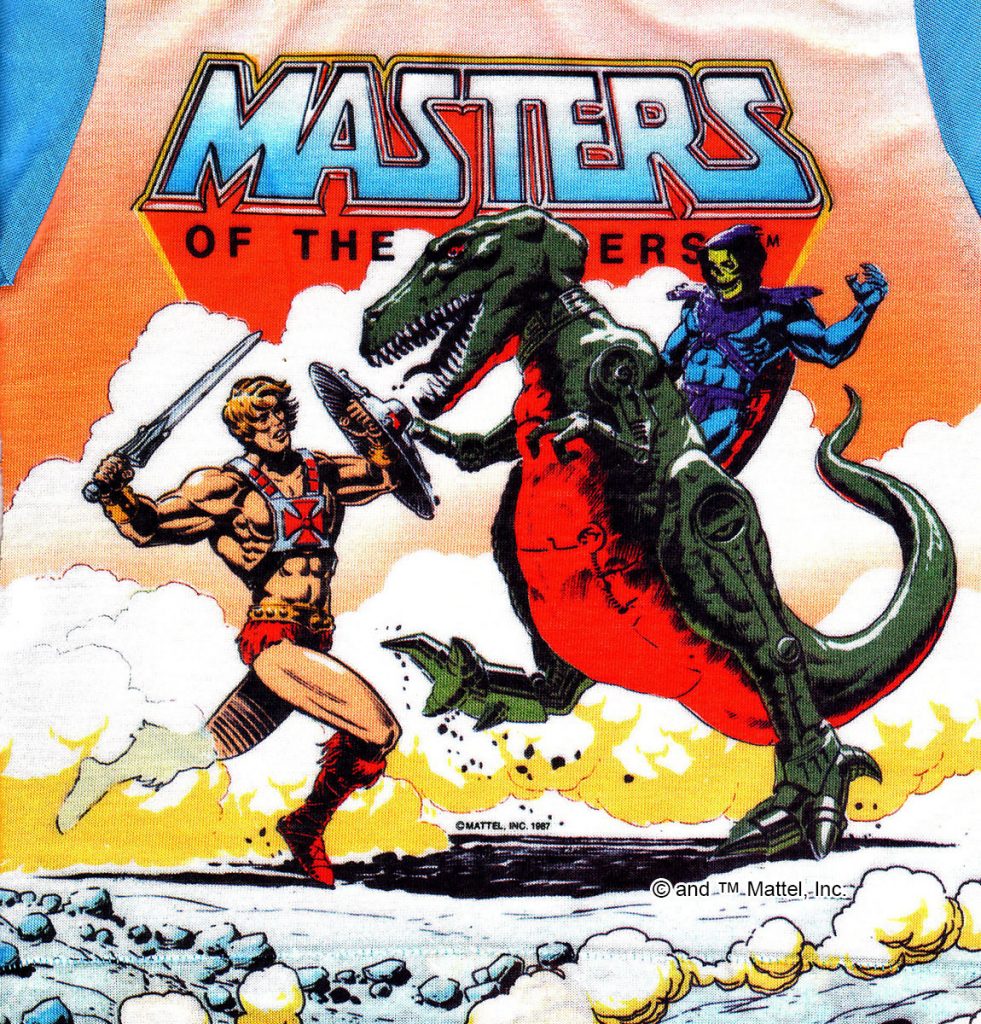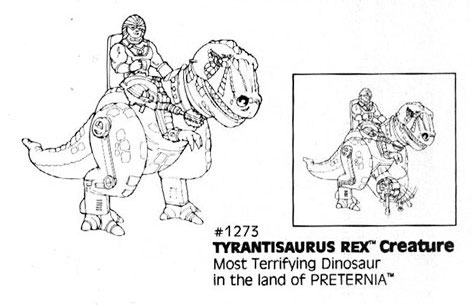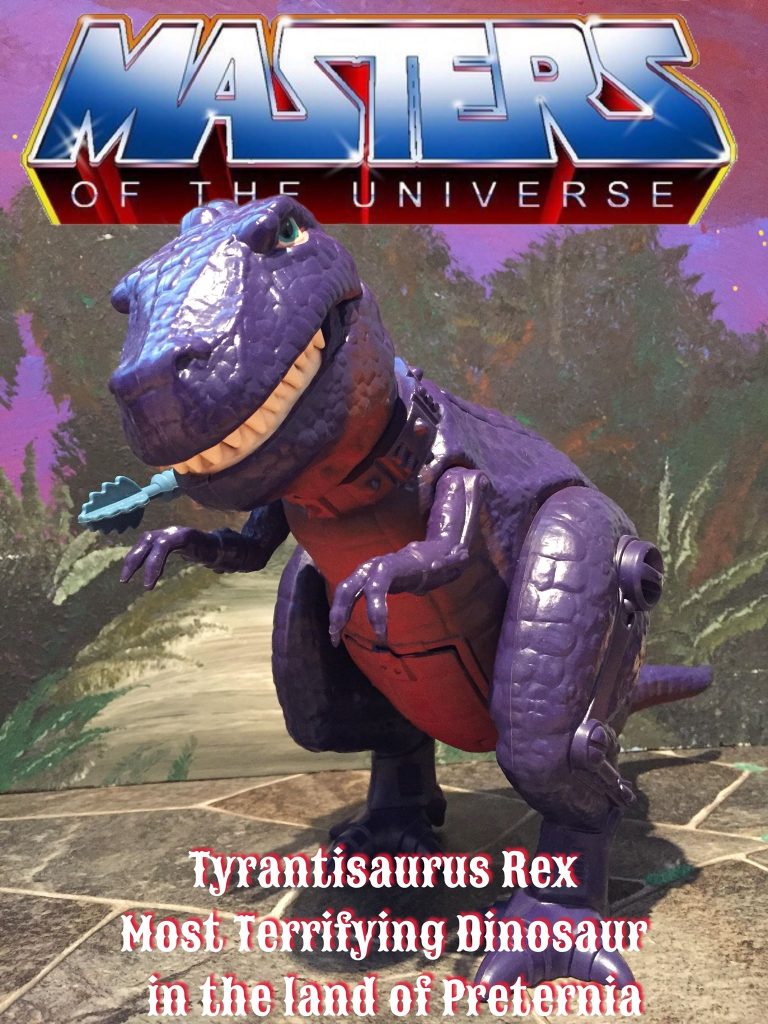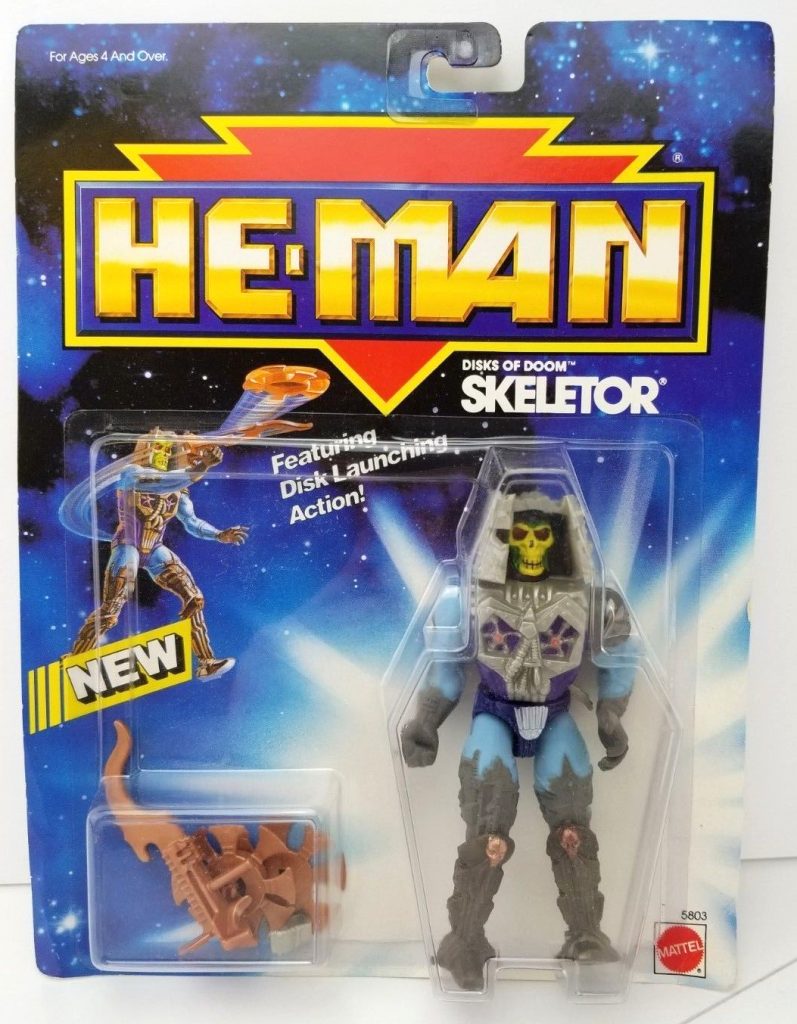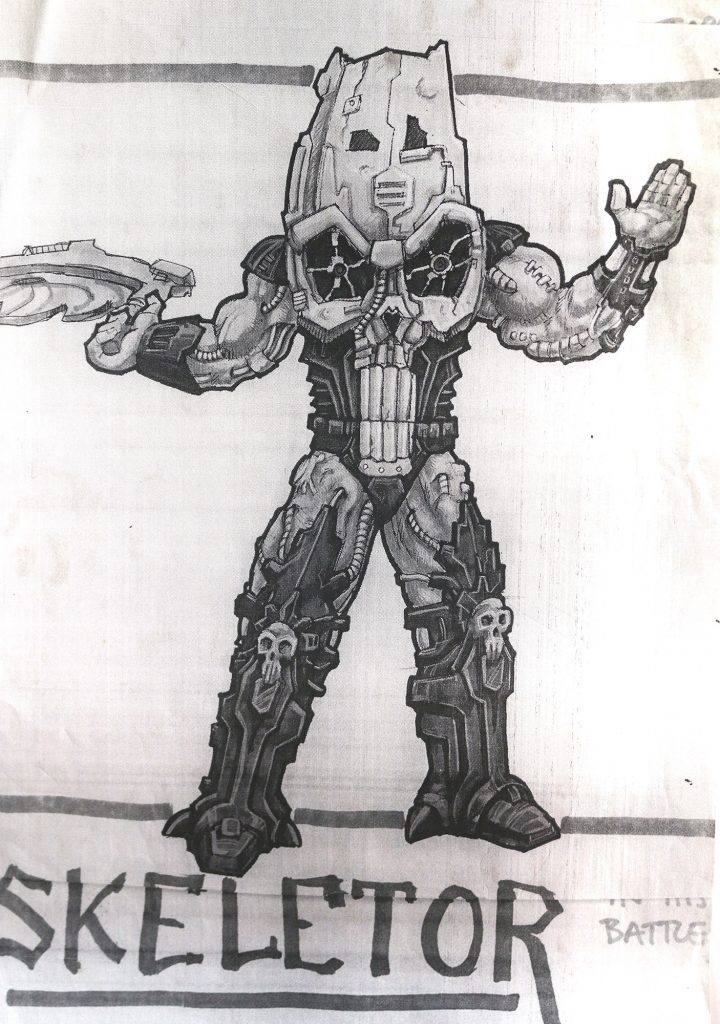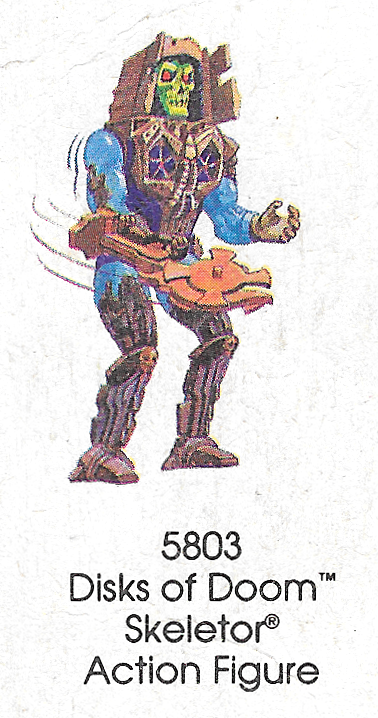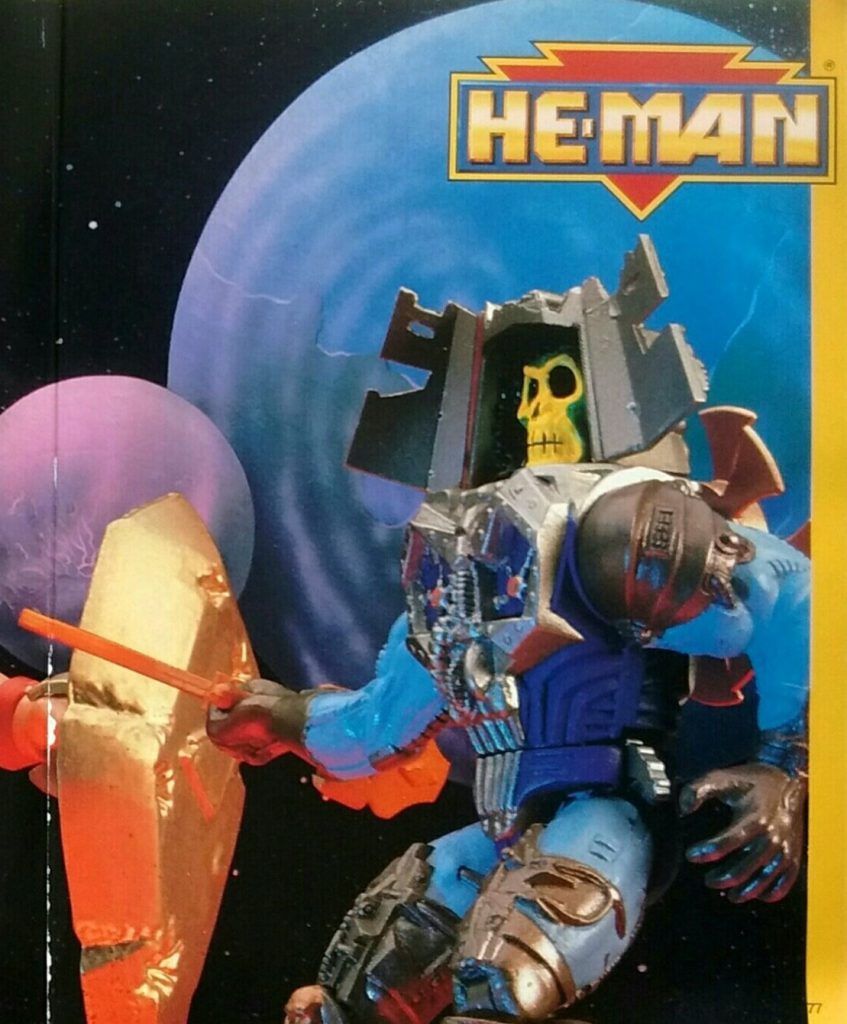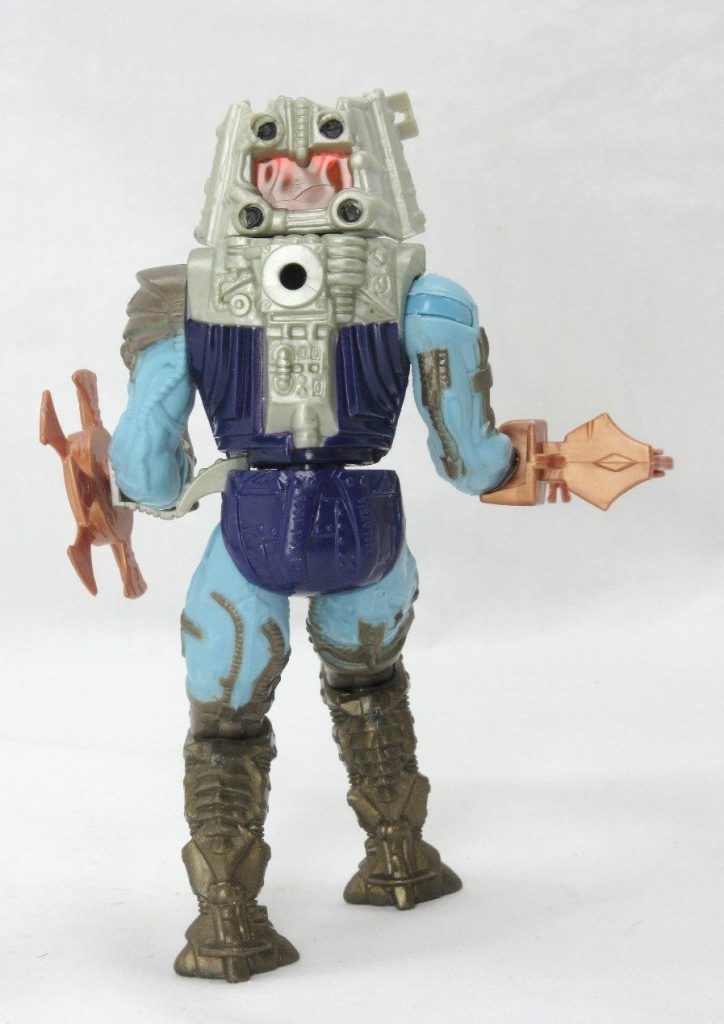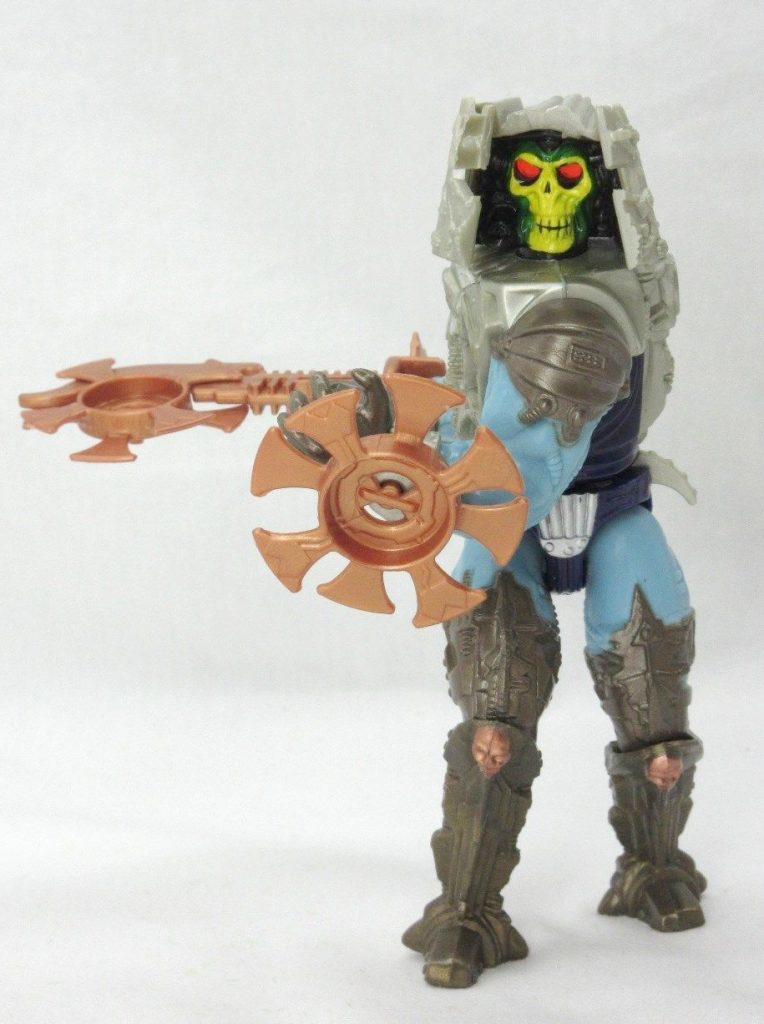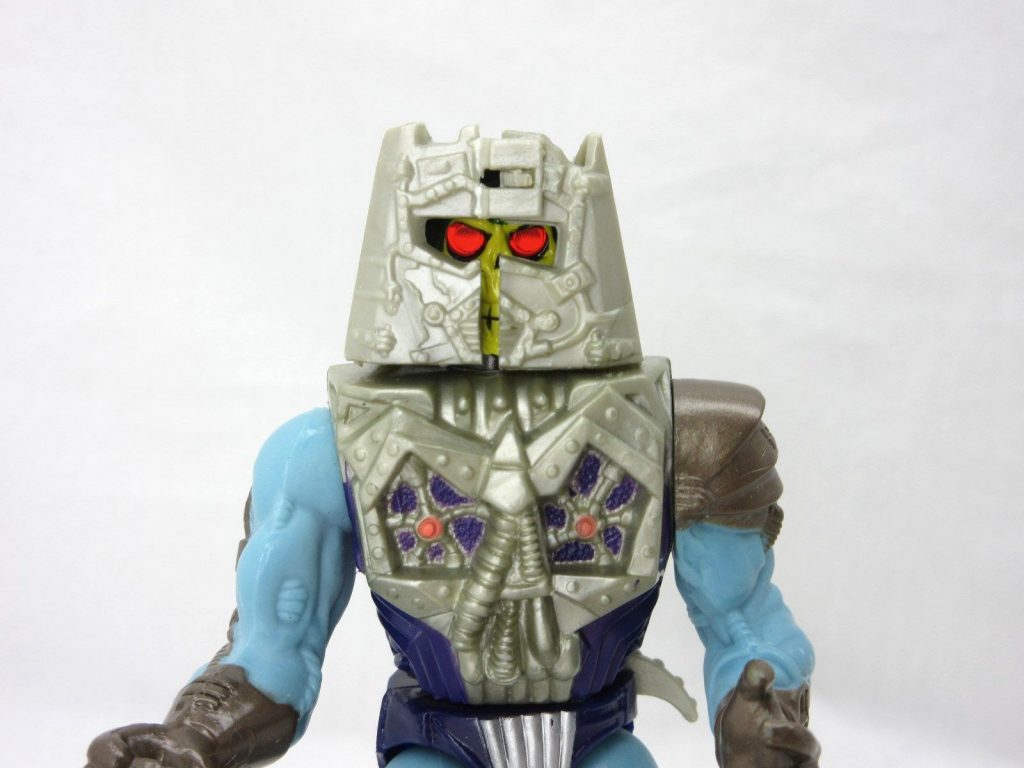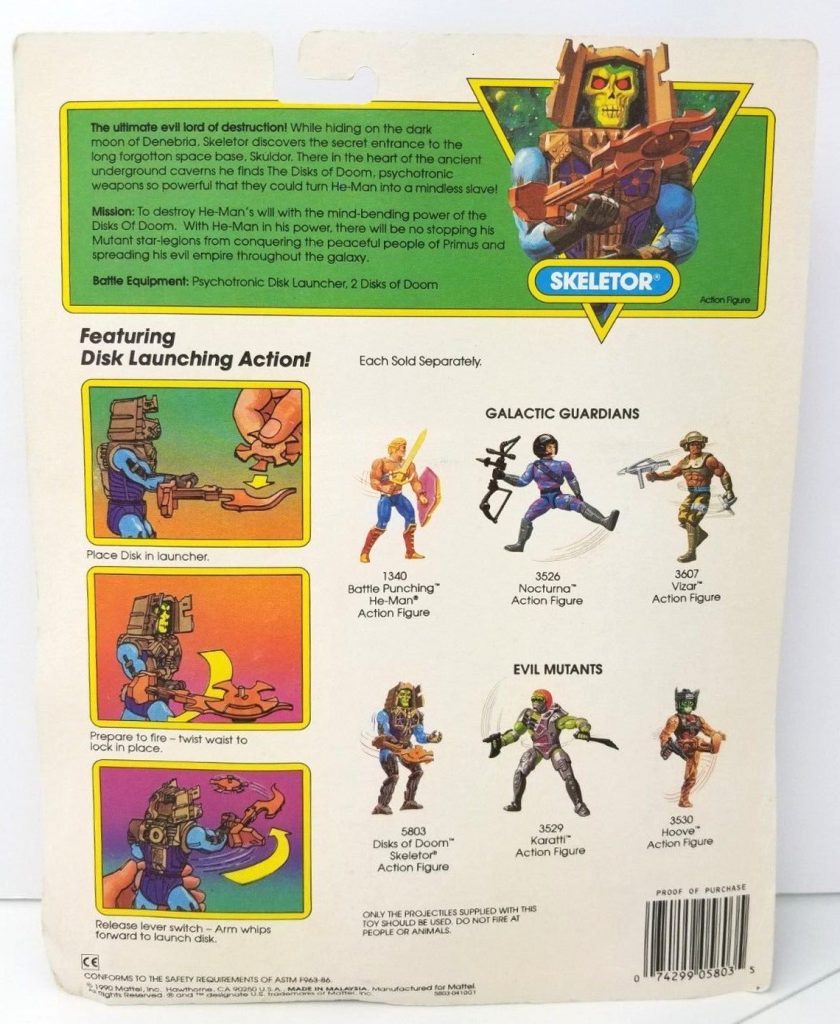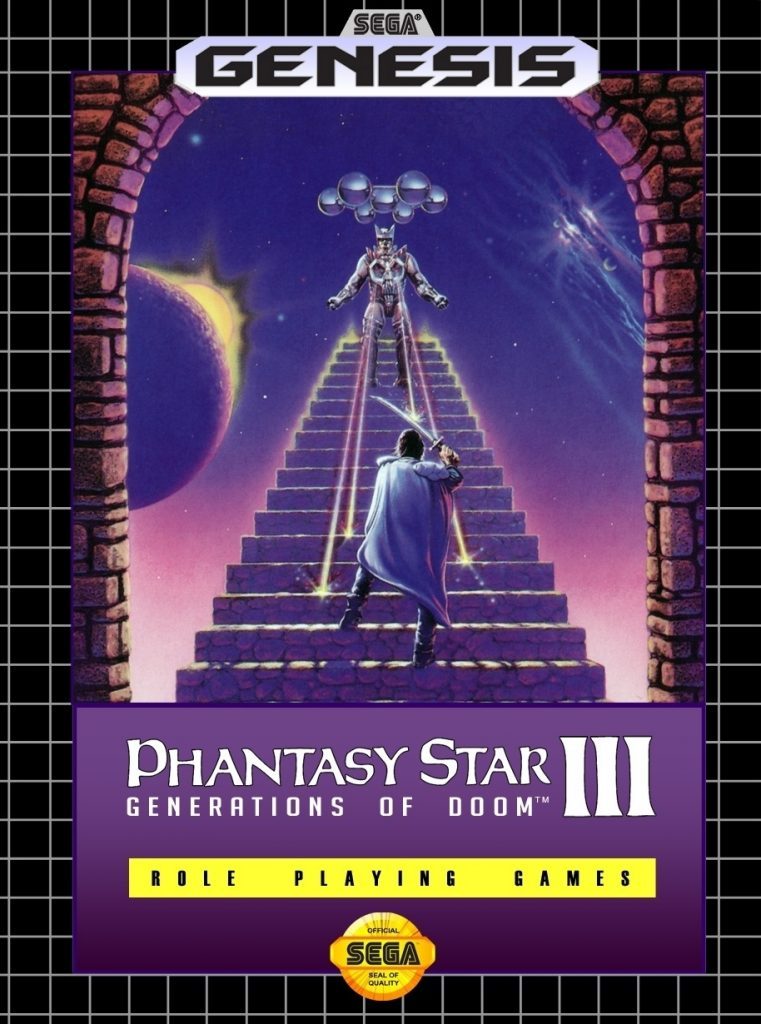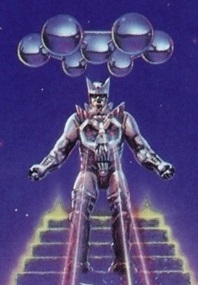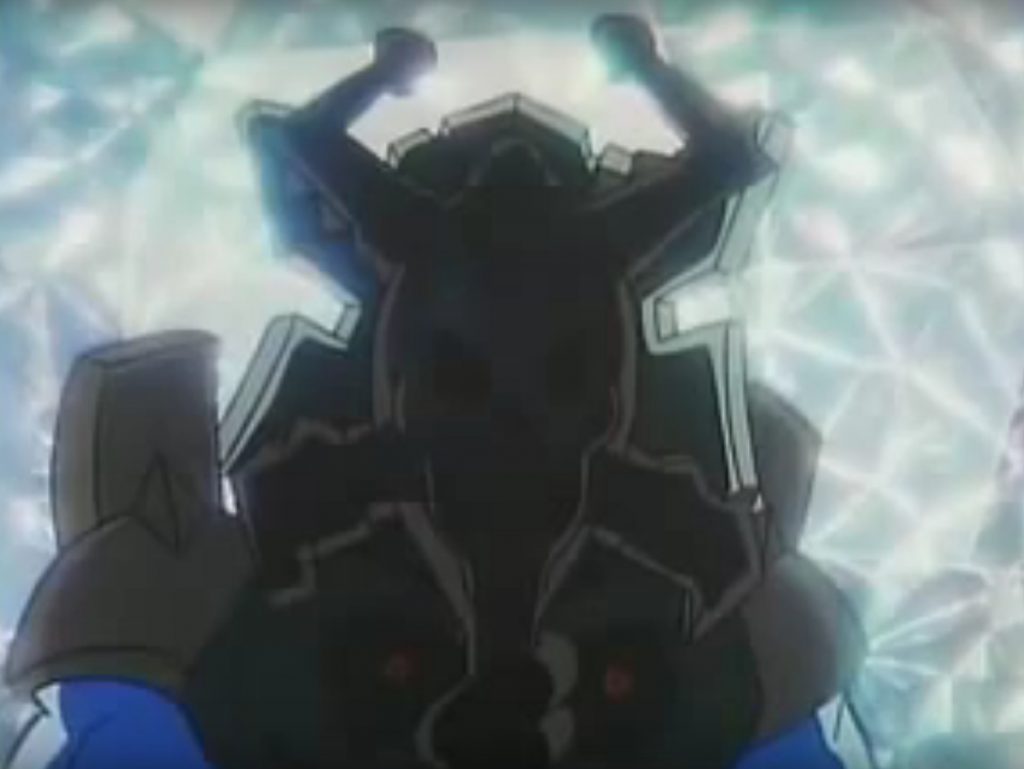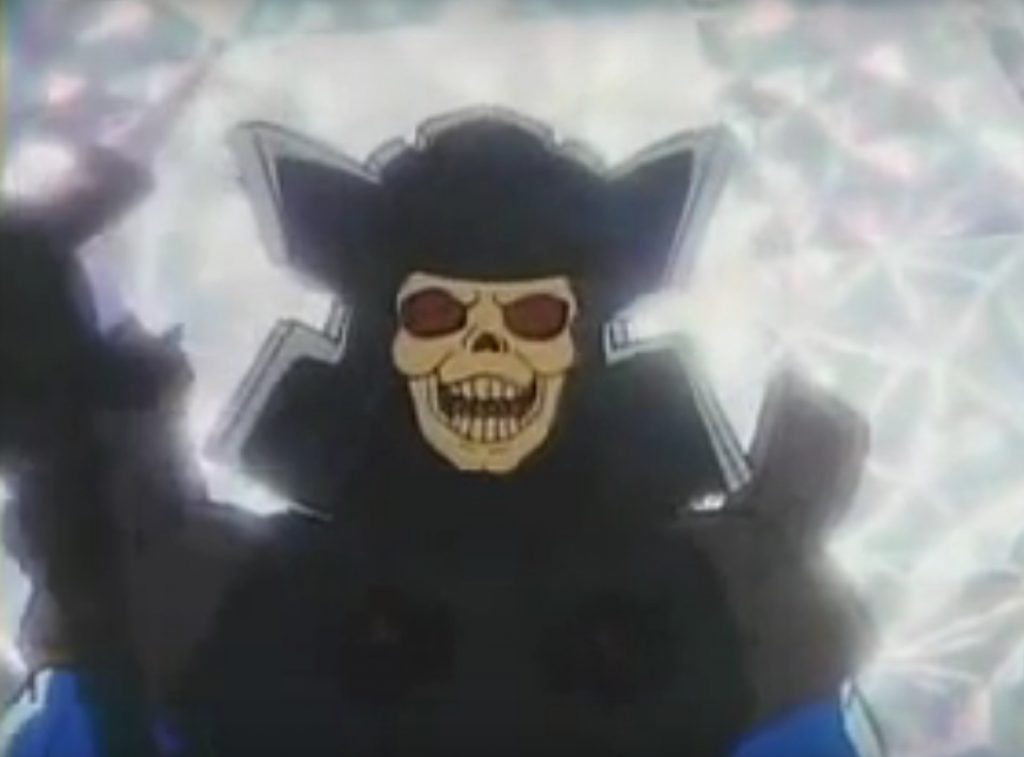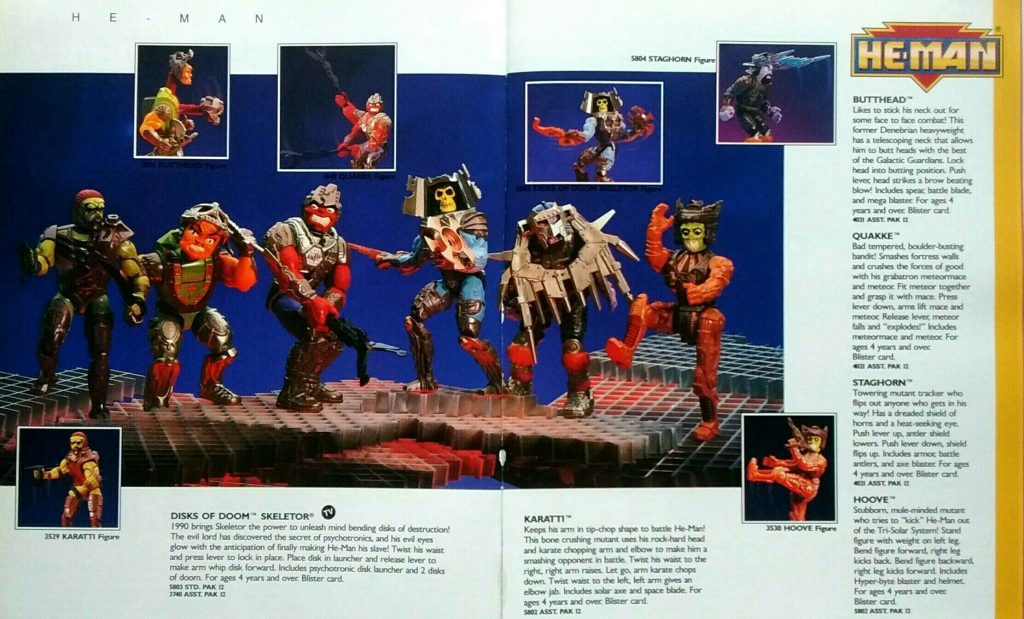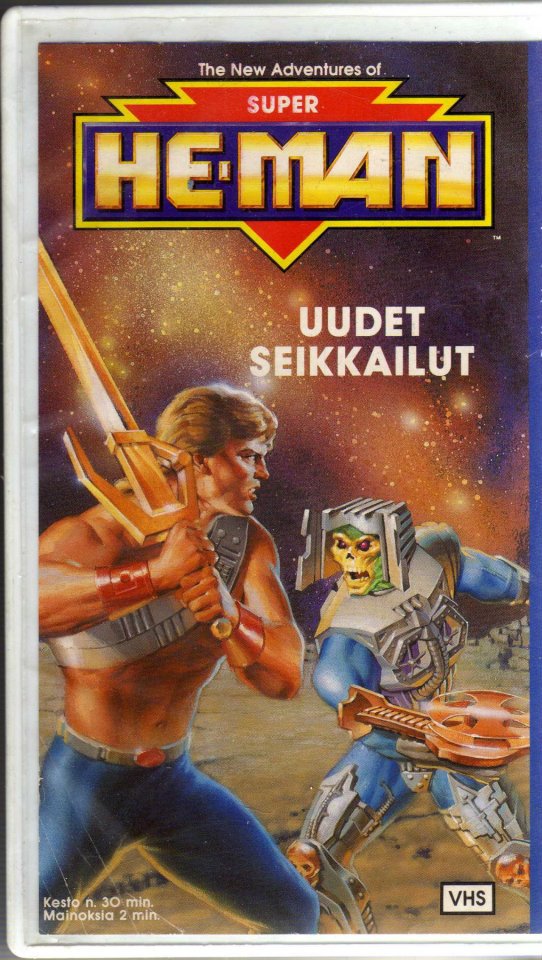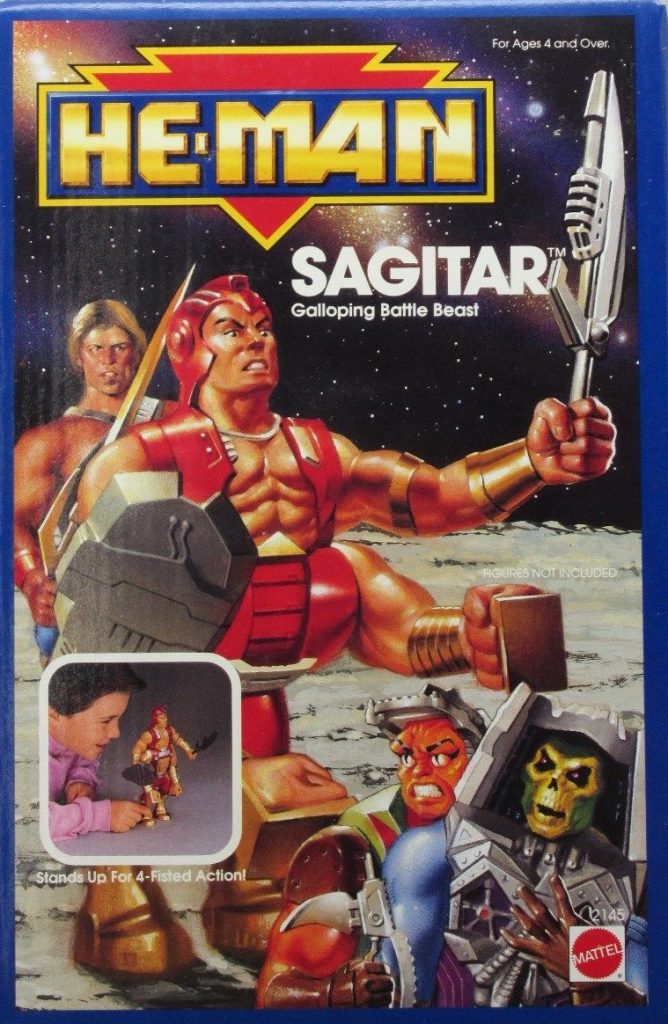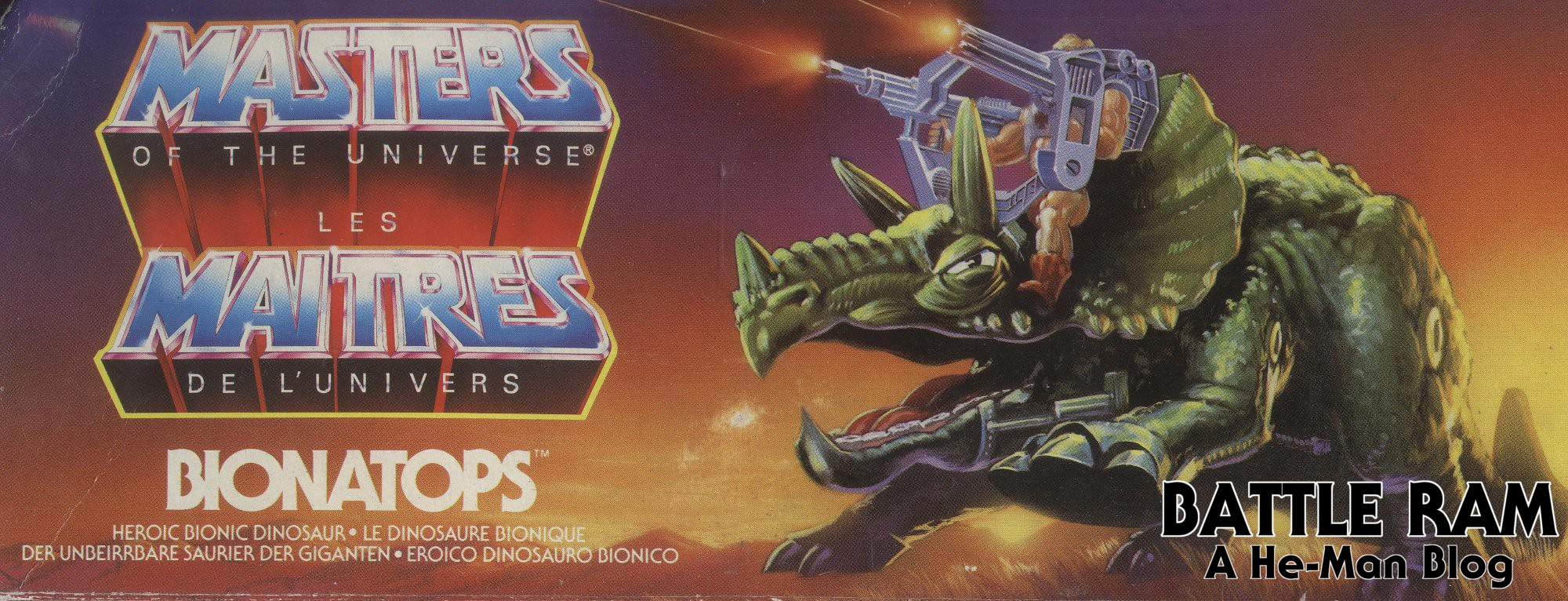
Bionatops was a figure I don’t recall encountering as a kid. I did see a Tyrantisaurus Rex at a friend’s house, but he was the only Powers of Grayskull dinosaur I saw during childhood. He’s a nice-looking figure, if very limited in articulation, and one that sought to capture the growing popularity of dinosaur toys in the late 1980s.
Design & Development
The concept for a triceratops-like toy in the MOTU line has a relatively long history, beginning with an Ed Watts concept dating to December 8, 1983. The Watts concept looks a bit like a styracosaurus, in that it only has one forward facing horn and a spikey frill. In the image below, it is being ridden by Skeletor and Trap Jaw, and features a metal face plate and mechanical details around its armor:

Watts illustrated another variation on this theme, this time featuring guns attached to two forward-facing horns coming out of the frill. This version features mechanical enhancements to the legs, and is being ridden by Dragon Blaster Skeletor on the horns rather than the back. It dates to September 4, 1985.
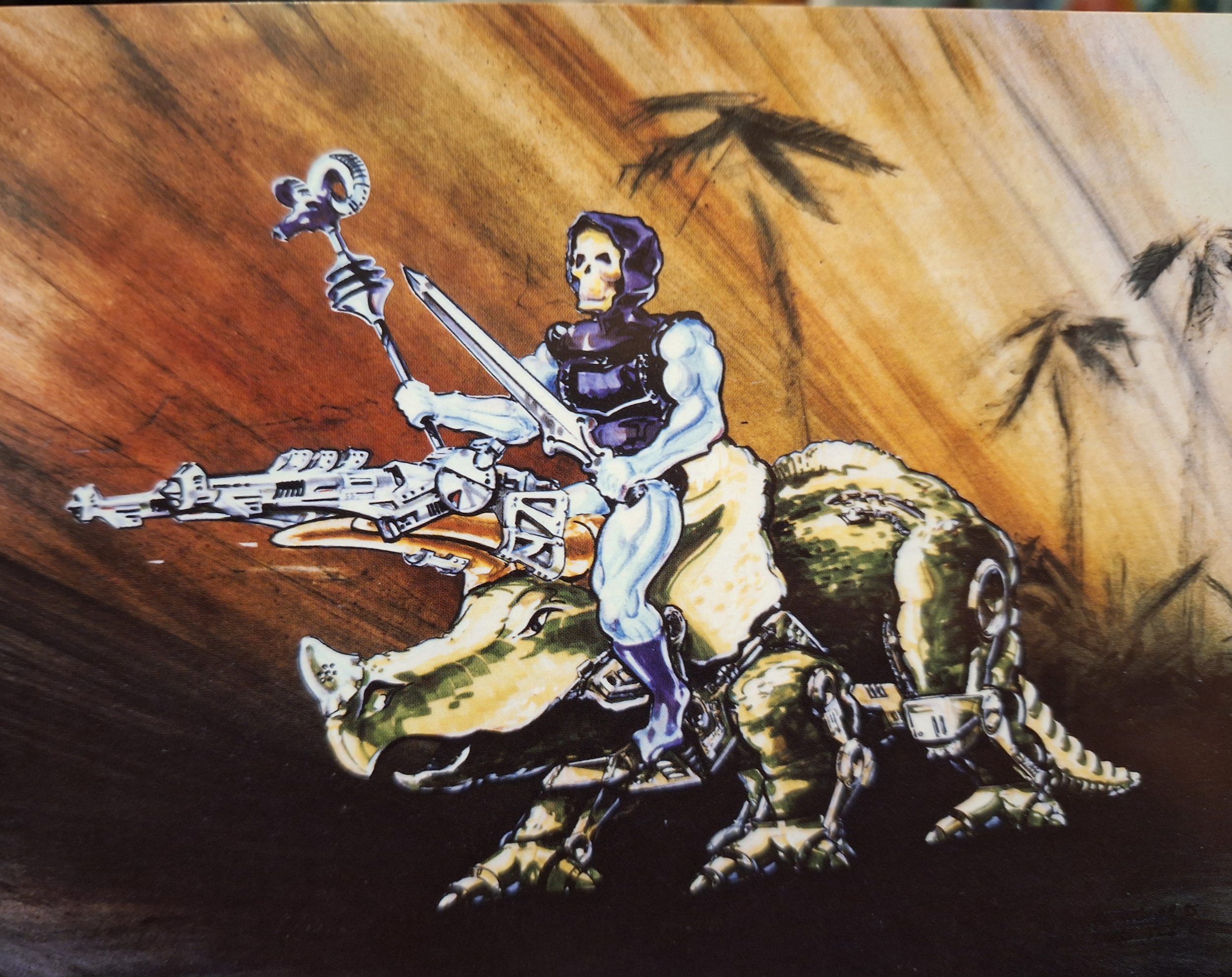
Mark Jones illustrated a similar concept dinosaur, this time with guns coming directly out of the two forward facing horns. Skeletor rides a saddle on its back. It also dates to September 4, 1985.
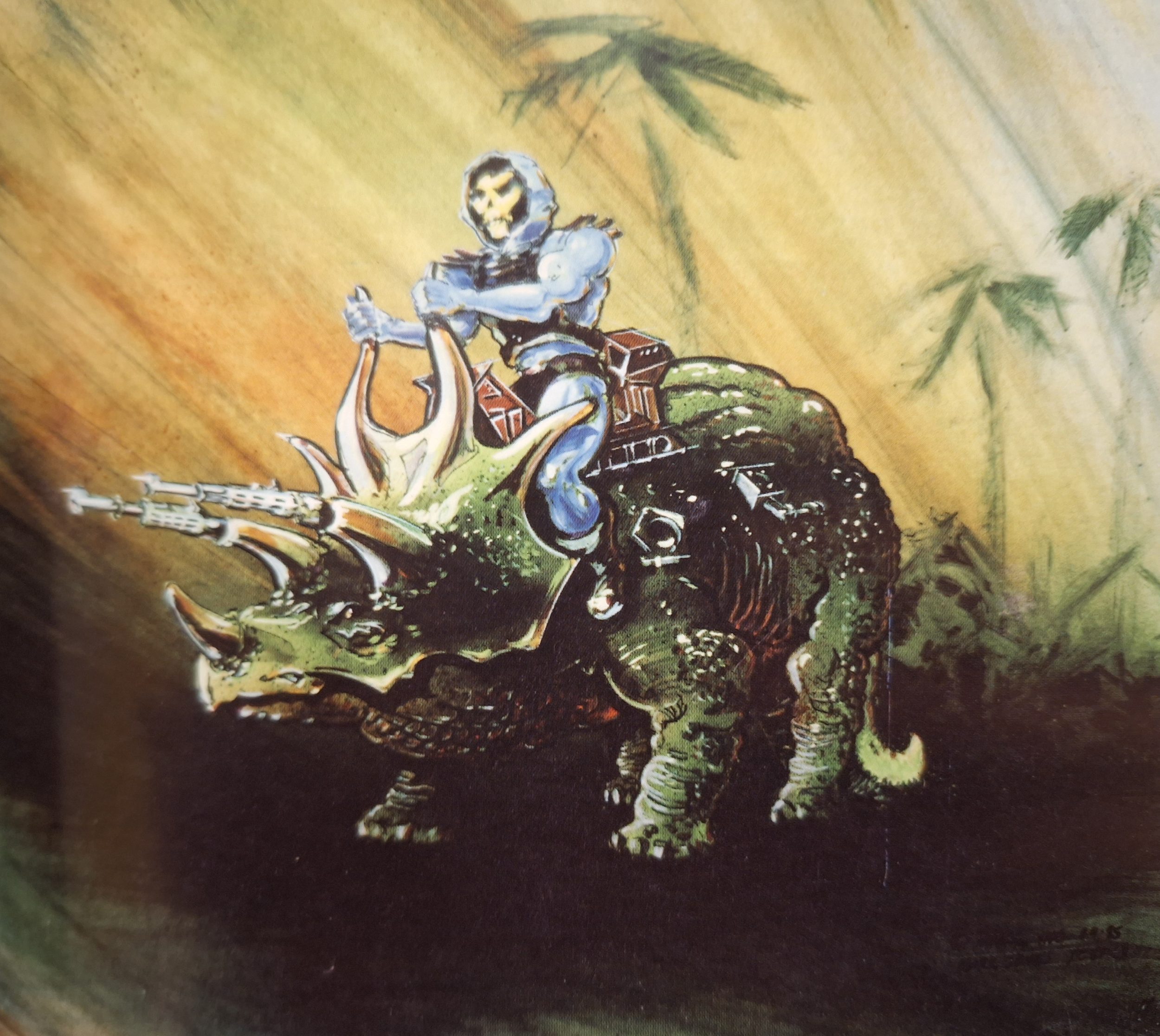
Finally, on January 15, 1986, David Wolfram did a final rendering of the dinosaur concept, called at the time, simply, Triceratops. It is similar in many ways to the 1985 Watts concept, although the gun has been modified and the beast is now allied with the heroic warriors. He-Man is shown riding in front of the frill.

In my interview with Martin Arriola, he had some additional information regarding the sculpting of Bionatops:
On the boys’ side, [engineering] was all done inside, and you had to go through politics. Now everything goes to vendor. You had to get saddled with people who were not so talented. Like Bionatops. This guy, Hal Faulkner had a bitchin sculpt, but the engineer started smoothing out the mold and getting rid of musculature. Smoothing it all out. My manager said he was fixing it, but it looked like a piggy bank. He also worked on middle tower for Eternia. There was only so much you could do.
You can see the finalized design in the cross sell artwork for Bionatops:
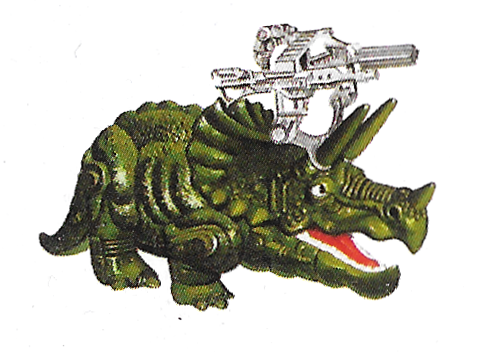
The toy was advertised, along with the other two dinosaurs, in the 1987 Mattel catalog (image via Nathalie NHT):


Figure & Packaging
Bionatops’ packaging featured the Powers of Grayskull logo and design style:







The artwork on the front of the packaging was done by Warren Hile, who also did the box art for Turbodactyl and Tyrantisaurus Rex:

The back of the packaging features some backstory on the Powers of Grayskull line and about Bionatops. I’ll reproduce all of the text here:
BIONATOPS
PROFILE: Heroic Bionic Dinosaur
WEAPON: Rotatable weapons mount onto horns!
ORIGIN: Related to the Triceratops dinosaur of pre-historic earth – natural enemy to Tyrannosaurus Rex.
Travel back in time through a secret time portal-and discover the ORIGIN of THE POWERS OF GRAYSKULL! Learn how He-Man became so strong! And explore the magical world of Preternia – home of HE-RO, the Most Powerful WIZARD in the Universe!
Monstrous dinosaurs and fierce giants – both good and evil – struggle violently for control of this strange & hostile land!
The dinosaurs in the time of HE-RO – Tyrantisaurus Rex, Bionatops and Turbodactyl – each posess a fantastic mechanical power.
Can HE-RO master all the good magic of the Ancient Wizards and protect future Eternia from forever falling into the claws of evil?
Look for He-Ro and the Powers of Grayskull coming your way in 1987!
Make jaw open… it chomps down! Rotate weapons on both sides!
Fit Weapons Rack onto horns, then “Lasers” on pegs!
The heroic BIONATOPS, with his massive bony head, carries warriors into battle – armors with a rotating laser weapons arsenal that mounts on its horns!
Like Battle Cat, Panthor, Stridor and Night Stalker before him, Bionatops lacks leg articulation. He is able to open and close his jaw, but otherwise he’s basically a statue. Images below come from some old eBay auctions, as I don’t own one myself:











It’s typical for the toy to have broken horns and missing guns. That combined with the low production numbers in 1987 make it expensive to acquire on the secondary market.
Bionatops appears in the 1987 style guide, with a bit more background on the four-legged dinosaur. He is described as He-Ro’s mount, although He-RO is usually associated with Turbodactyl.
NAME: Bionatops
GROUP AFFILIATION: Heroic Animals, Powers of Grayskull Segment
ROLE: Heroic dinosaur mount of He-Ro
POWER: Carries He-Ro or one of his wizards into battle; chews up defenses with its jaws; uses its horns to knock enemies out of the way.
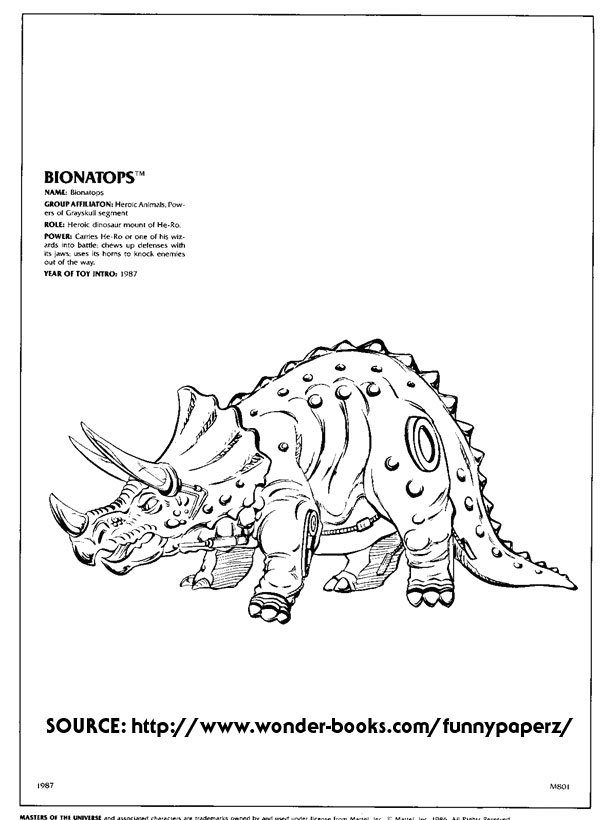
Comic Appearances
Bionatops was featured on the cover of The Powers of Grayskull: The Legend Begins. The comic was intended to introduce the new Powers of Grayskull line, and was the first in a three part story. However only part one was released, and the entire MOTU line was cancelled due to flagging sales.
In the story, He-Man and Sorceress travel back in time to Preternia, initially to teach He-Man about Eternia’s past. But when Skeletor follows them back in time and teams up with King Hiss to destroy the Elders, He-Man is allowed to intervene. He is given a disguise and the Sorceress conjures up Bionatops for him to ride into battle (images come from the Dark Horse minicomics collection).
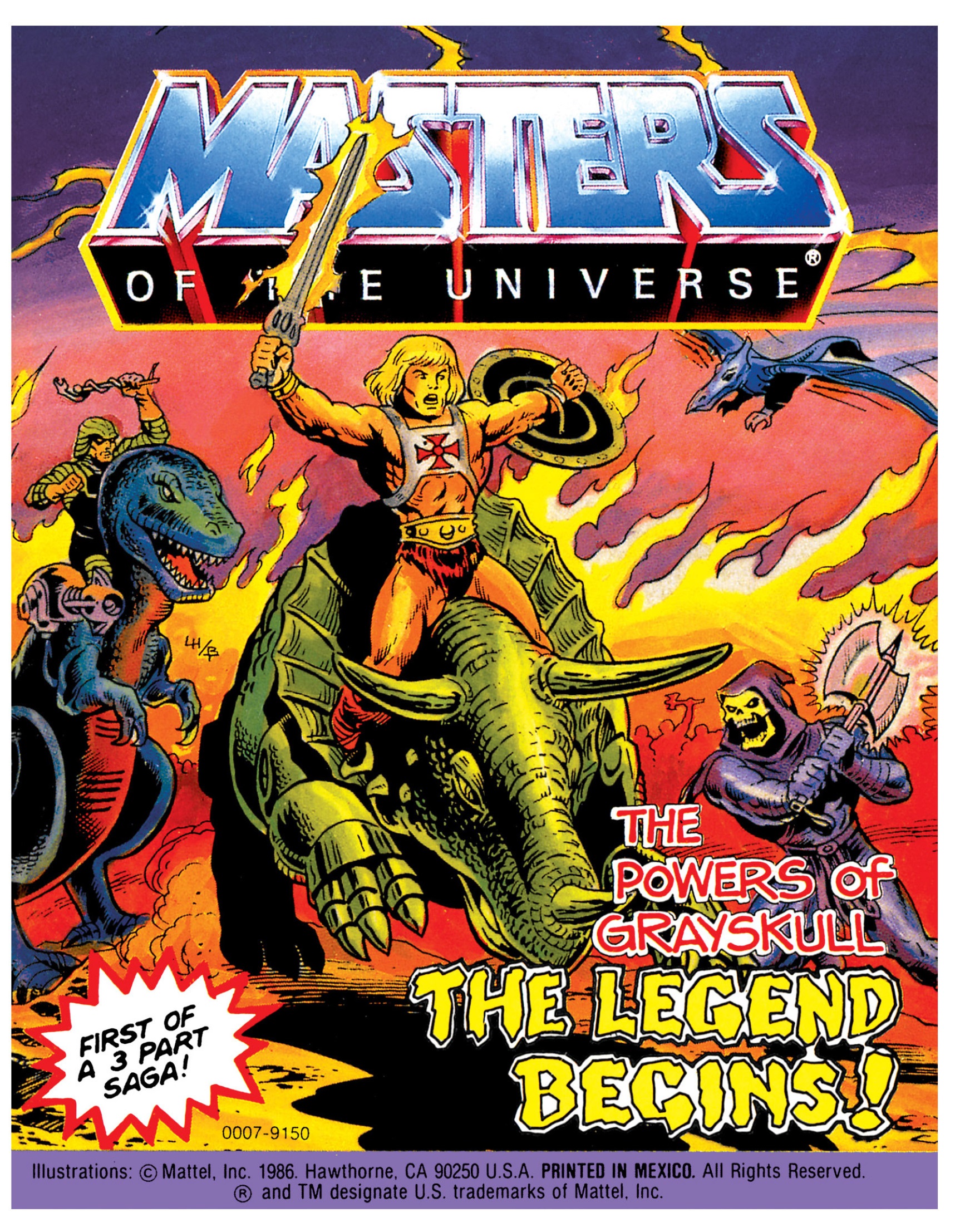
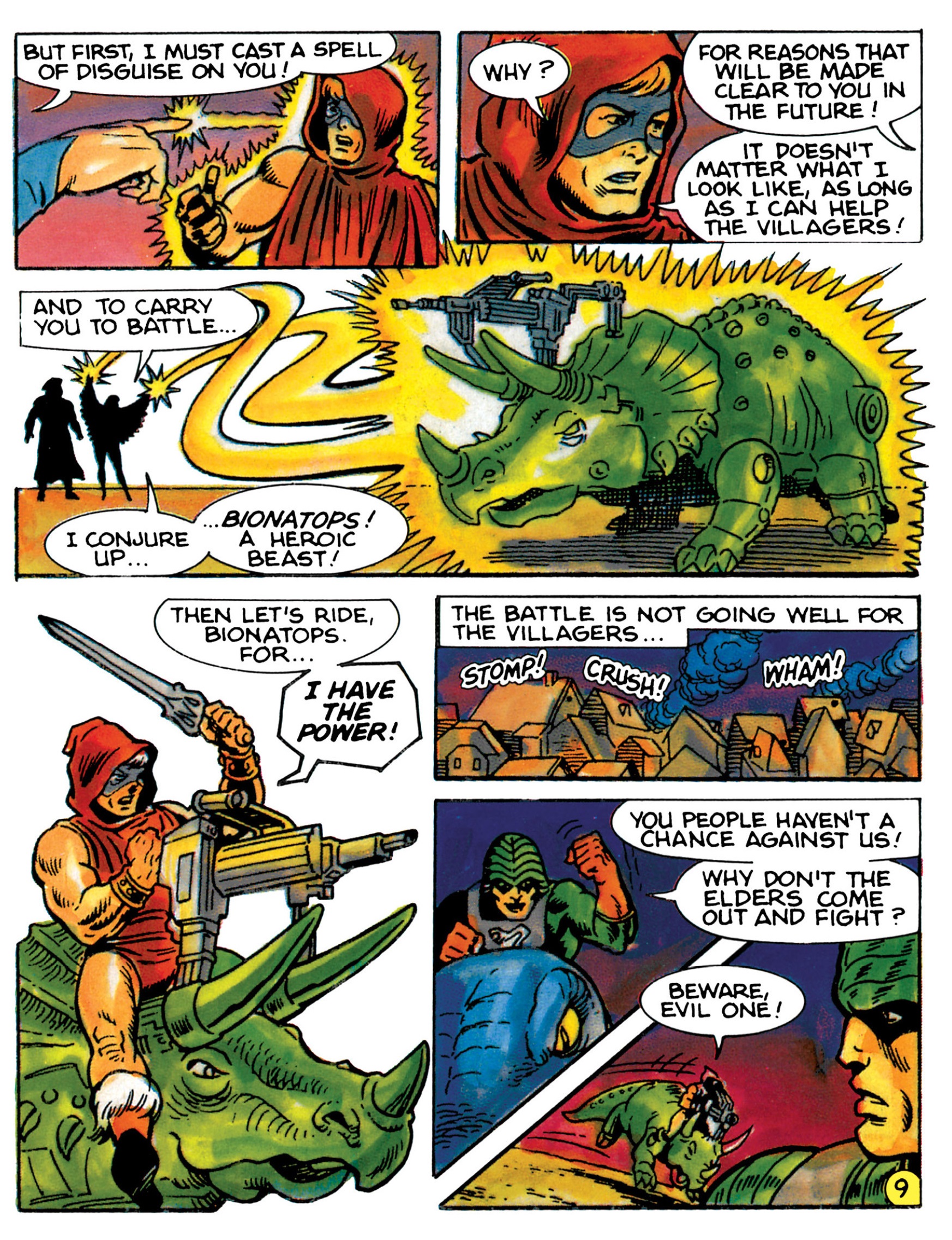
In Journey To Preternia, in the 1987 Spring issue of MOTU Magazine, Skeletor and He-Man accidentally travel through a time portal, and end up allying with Tyrantisaurus and Bionatops, respectively.
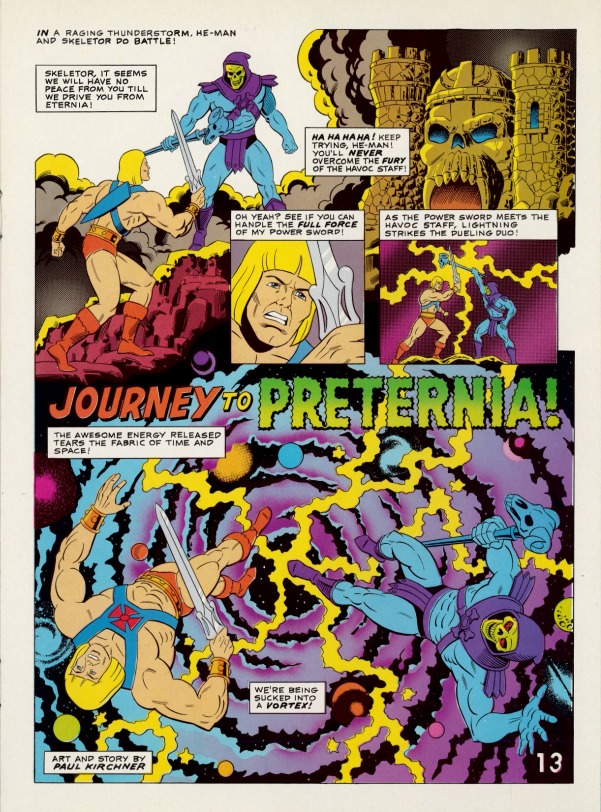

Bionatops appears very briefly in the 1987 UK comic story, A Rip In Time. There are actually two of them, and they feature guns popping out of their chests:

Other Appearances
Bionatops is featured on the cover of the 1988 Winter issue of He-Man and the Masters of the Magazine in an illustration by Earl Norem:
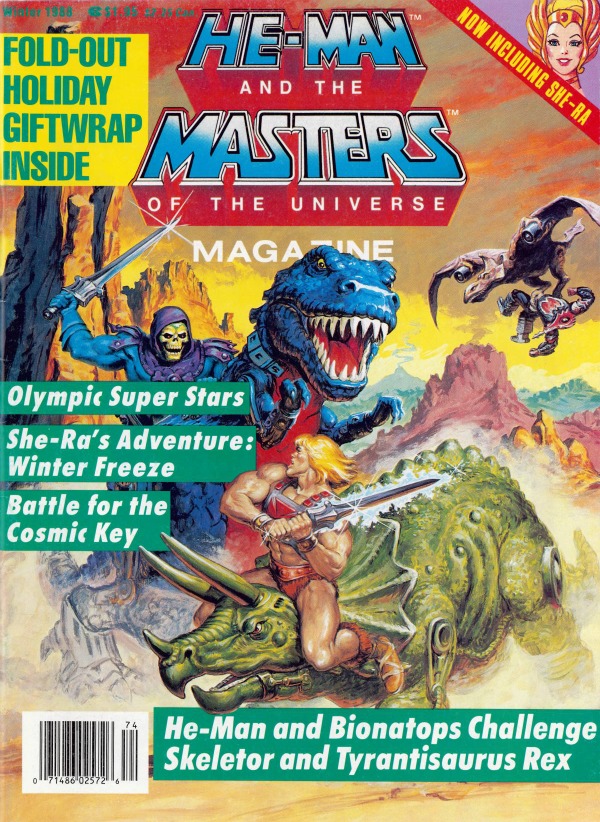
He appears in another piece of Norem artwork used in an inside page of the Spring 1987 issue of MOTU Magazine.


He appears also in the background of the cover of the Spring 1987 issue, again illustrated by Earl Norem.
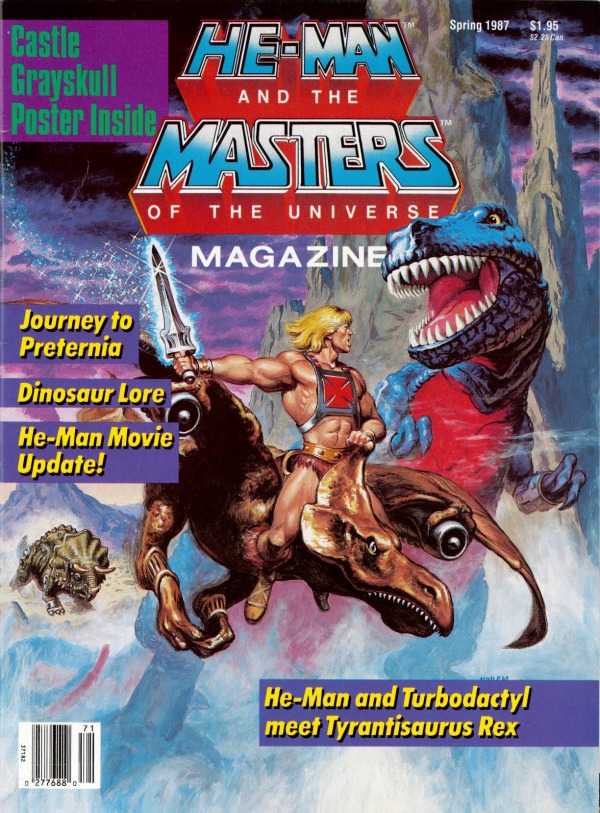
Bionatops is featured front and center in William George’s Preternia painting:
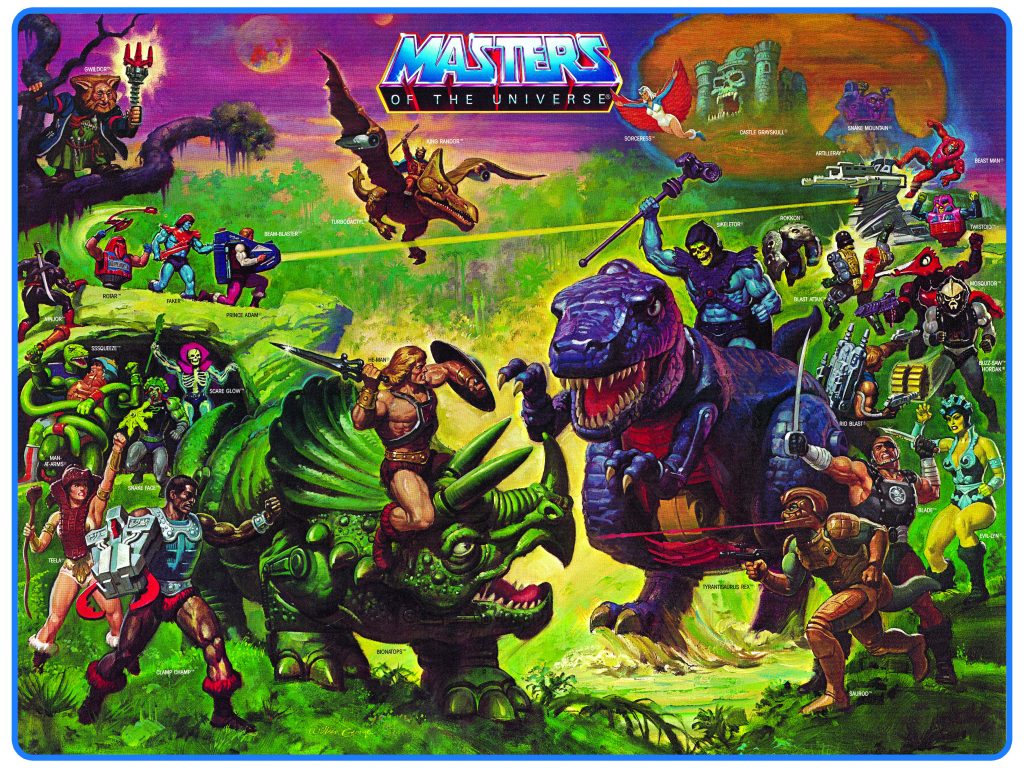
Bionatops appears in some Errol McCarthy artwork done for a line of T-Shirts. This version features the golden guns as depicted in David Wolfram’s concept art:
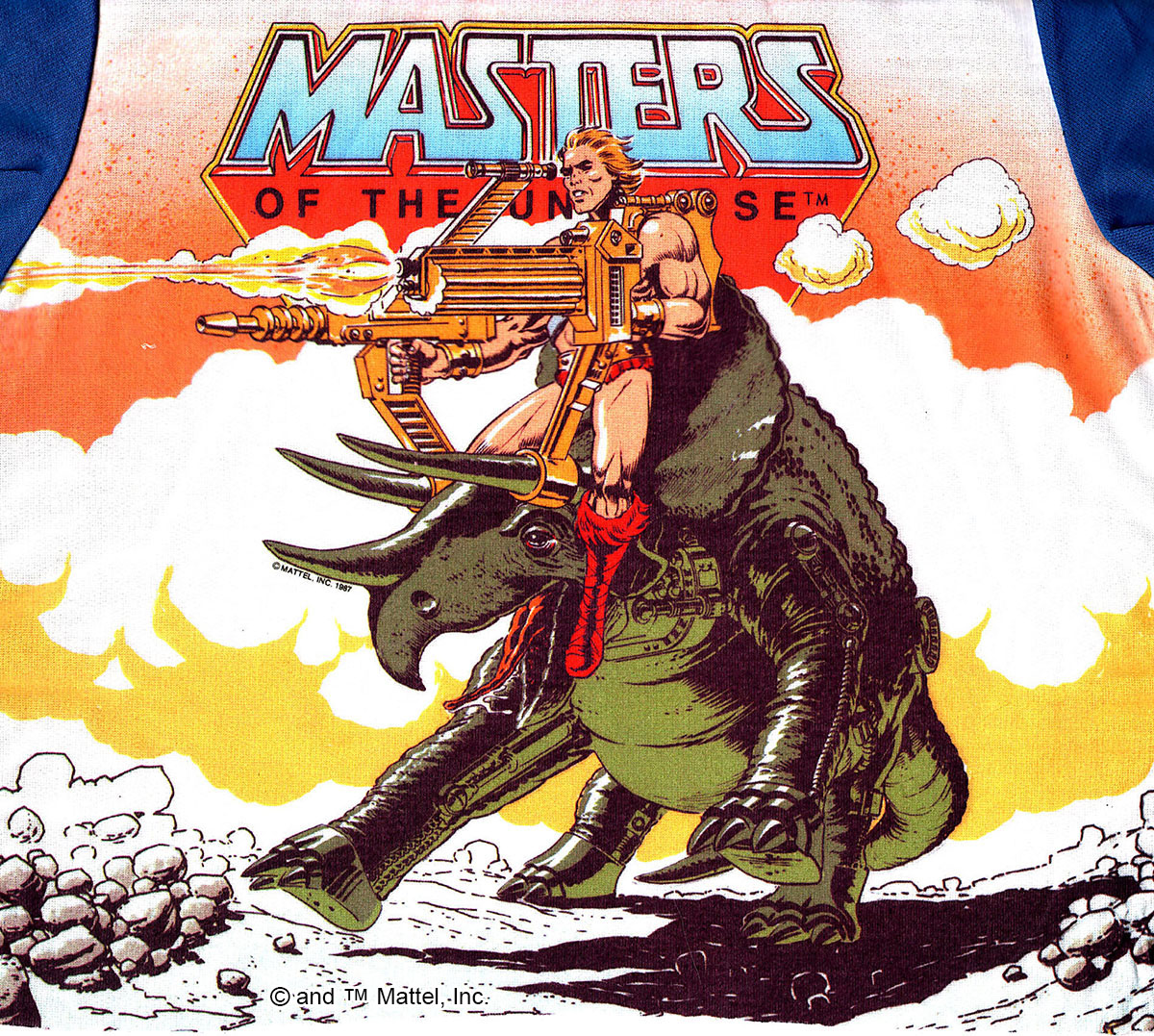
Bionatops appeared in ads around the world as well:

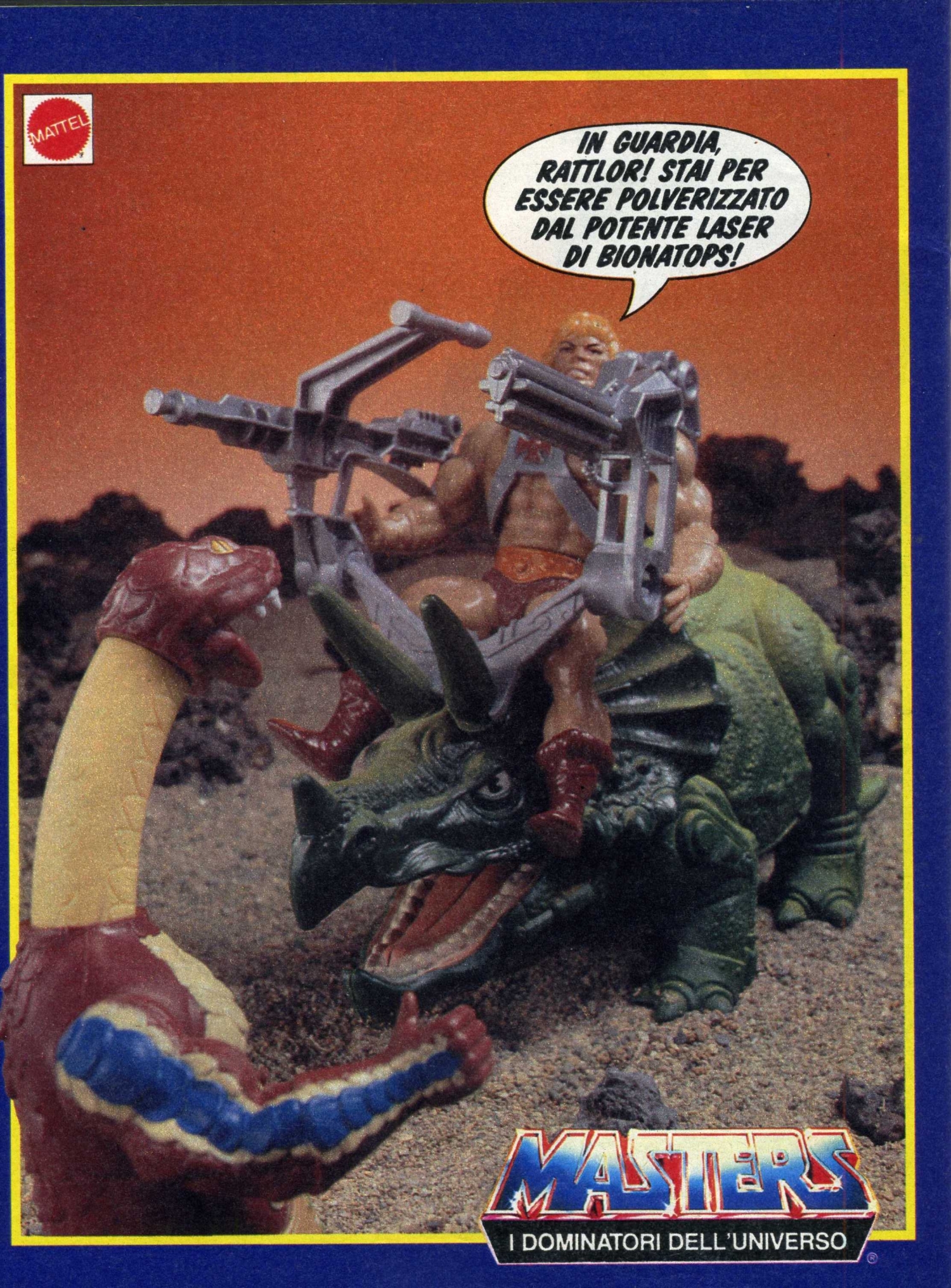
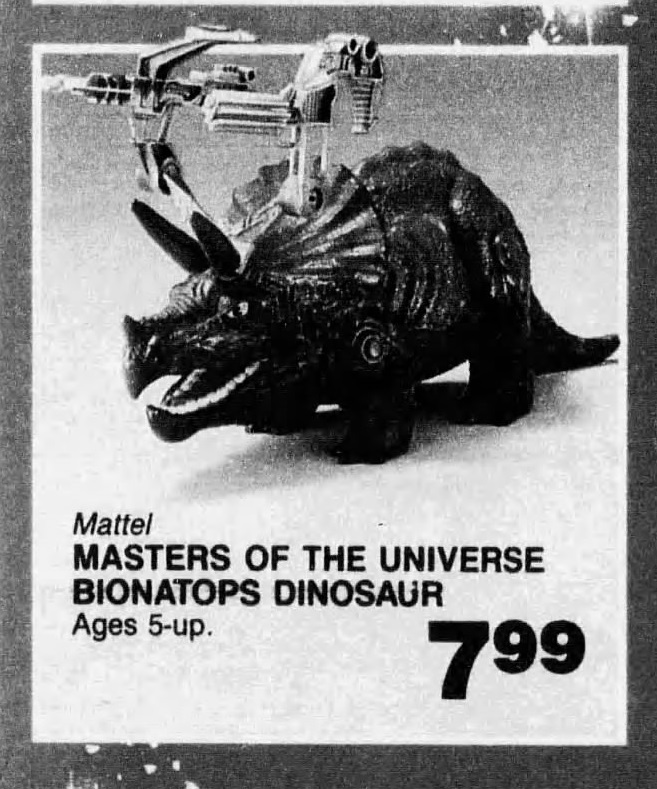
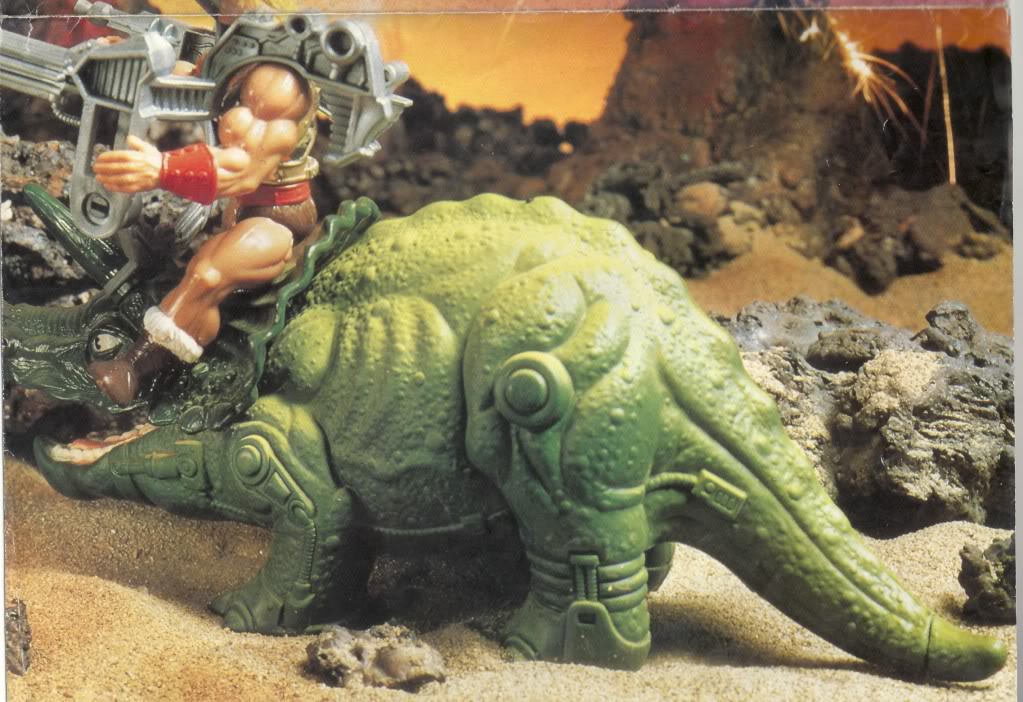
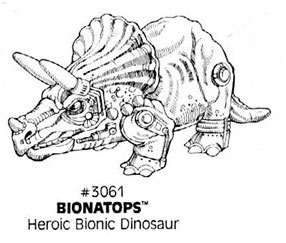
Bionatops in Action
Øyvind Meisfjord has kindly shared the following video and action shots of Bionatops and He-Man!
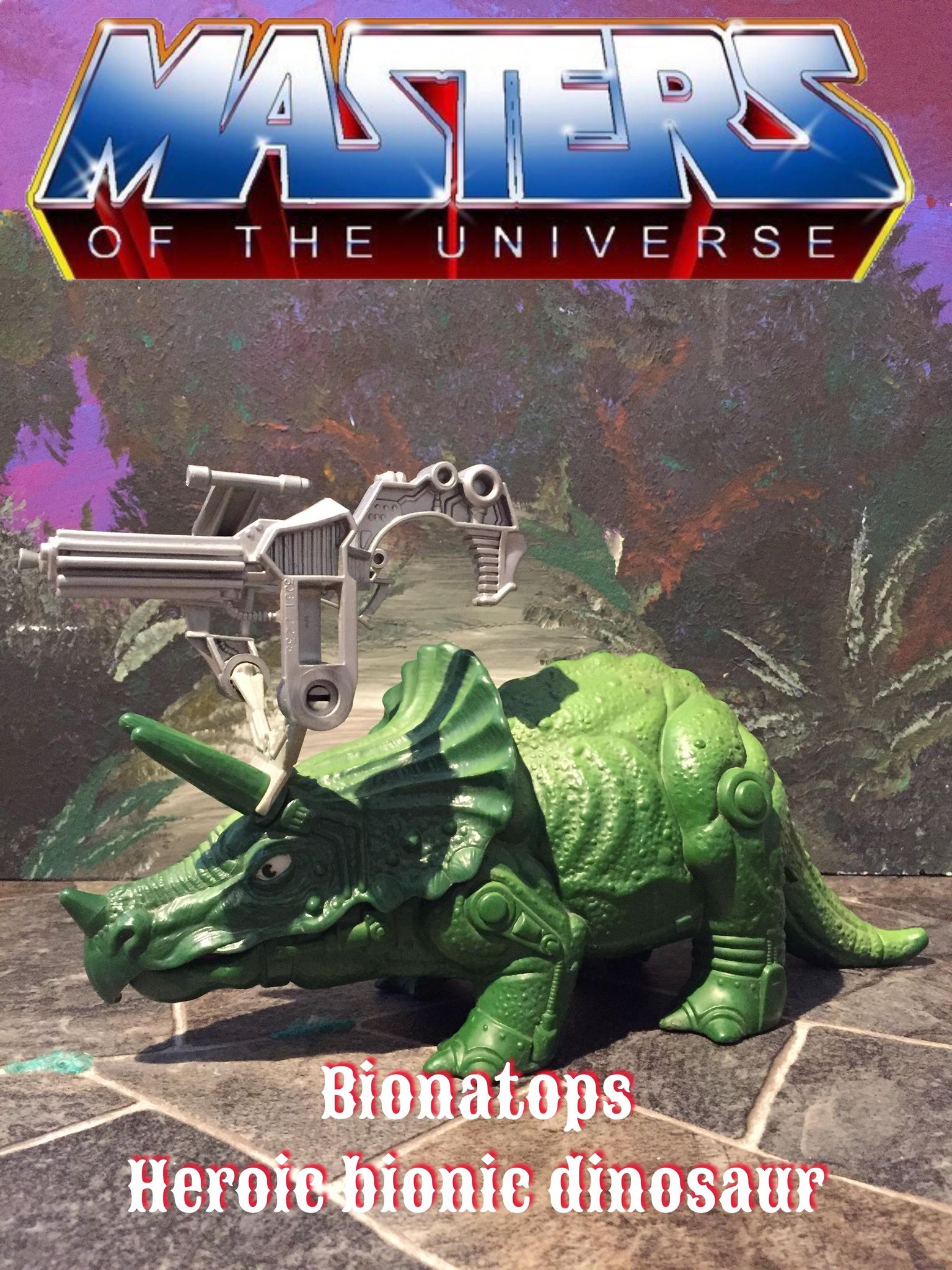


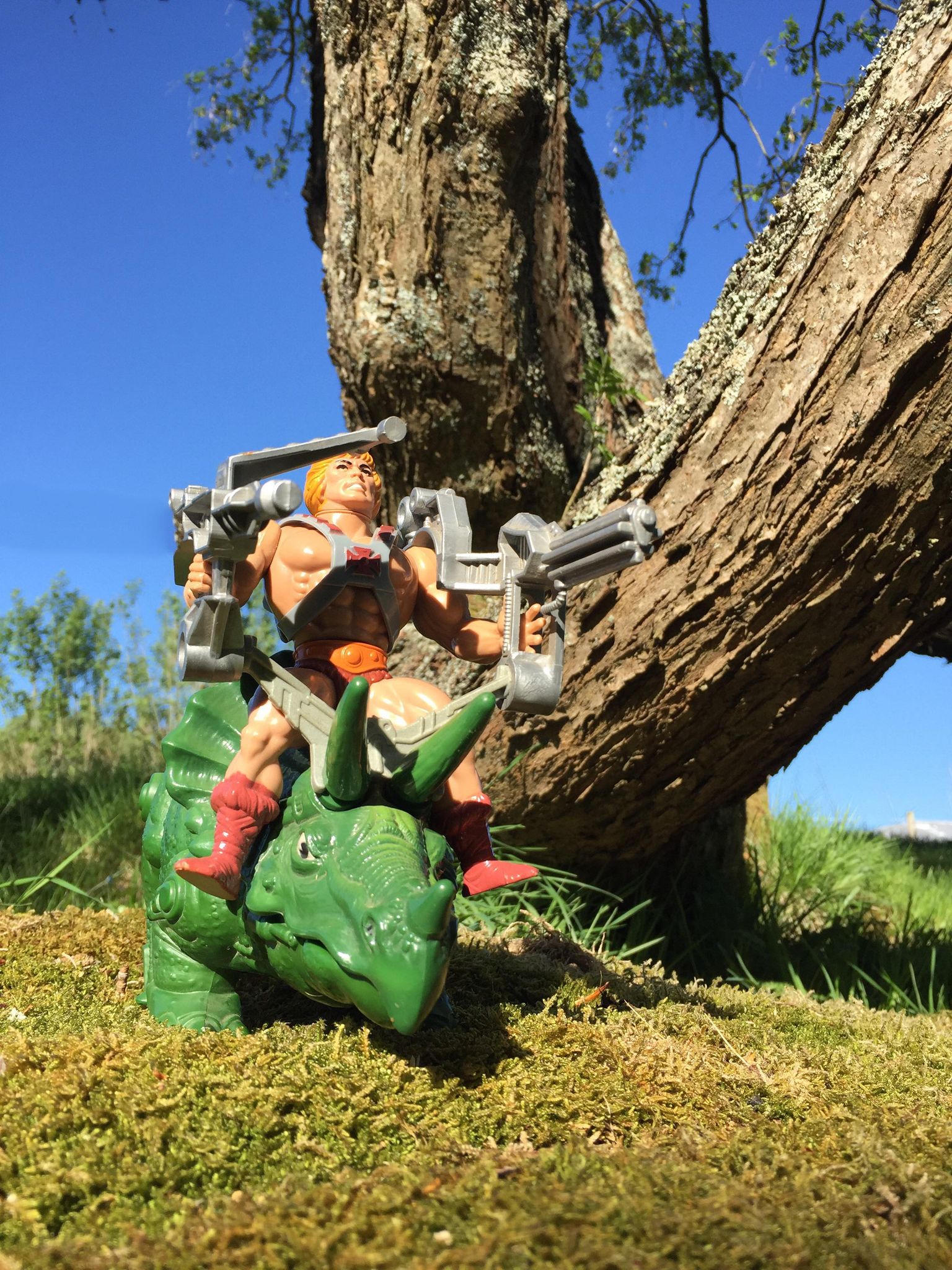
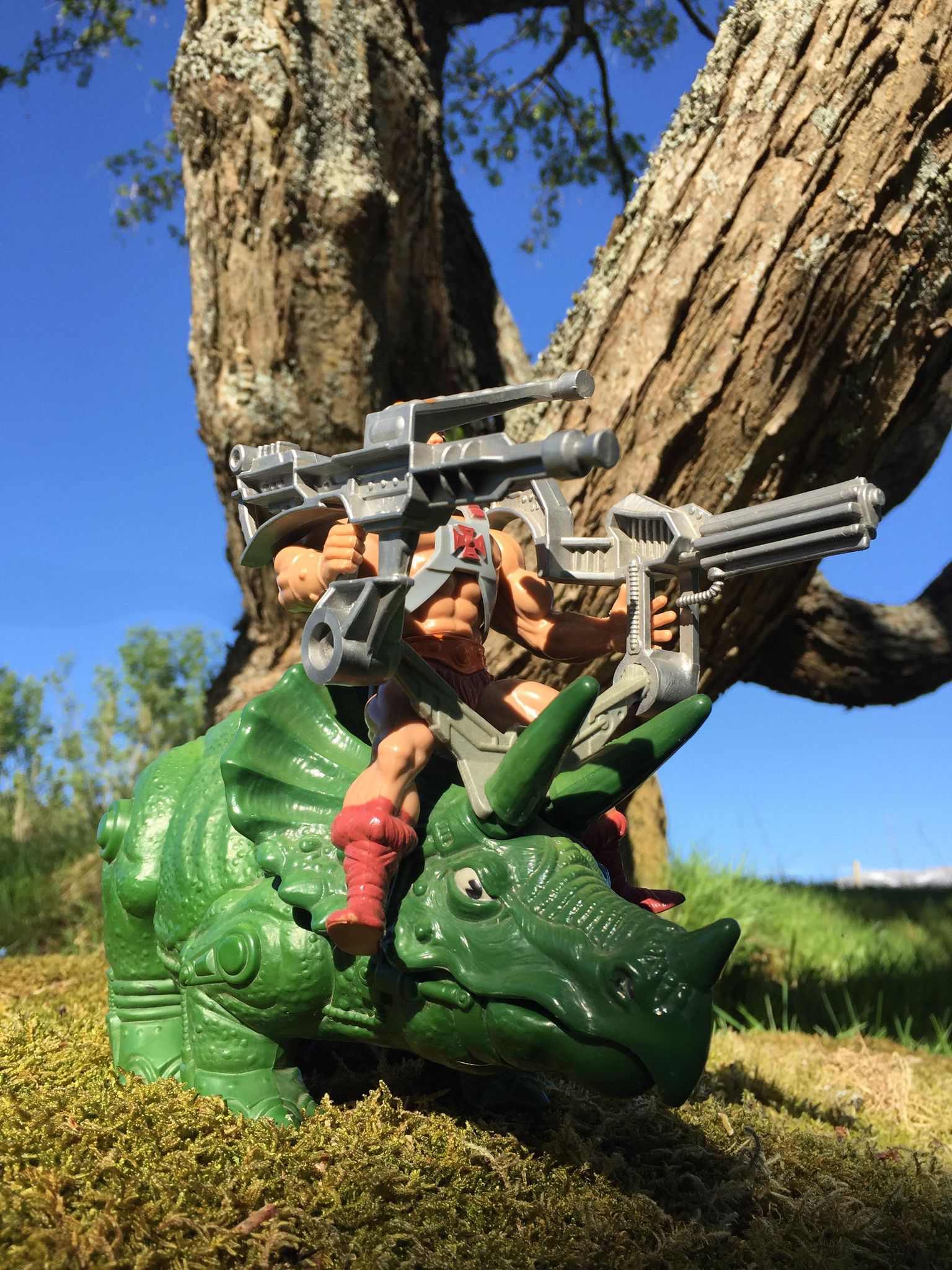
Thank you to the following individuals who are current Patreon supporters!
- Ben M.
- Eric H.
- Jon E.
- Matthias K.
- Max I.
- MotuOriginsCork
- Orion W.
- Øyvind M.
- Philip O.
- Robert B.
- That Clyde Guy
Want to support the blog? Consider becoming a Patreon supporter. You’ll also gain access to exclusive content and early access to posts on the blog. Alternatively, you can do your toy shopping through my Entertainment Earth affiliate link, below. Thank you!
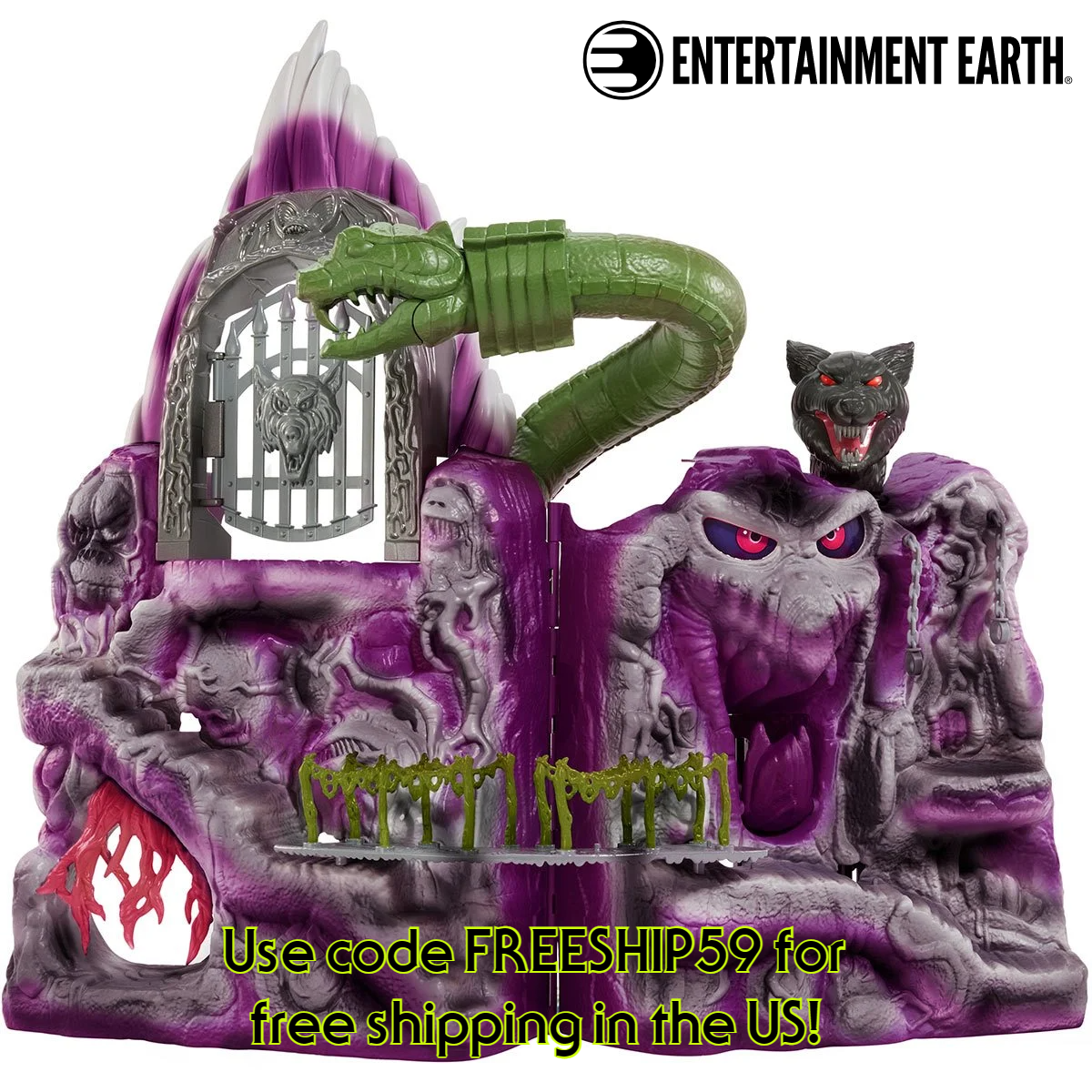
The MOTU Living Archive at Orko’s Keep
Also, if you have good scans of vintage MOTU books, comics, magazines and other print material, please consider sharing them with my buddy Ben Massa. Ben is building an archive of vintage MOTU material that he will share with fans, comparable to the old He-Man.org archives, but with higher resolution material. Learn more at this link.



